Scientists Think Spacetime May Have Come From Magic
Seems about right.

- Scientists believe that spacetime may have emerged, in part, from a quantum property called “magic.”
- “Magic” describes how hard a quantum state is to simulate on a regular computer.
- According to a press release, the researchers’ work “provides the first direct link between the quantum property of magic and the chaotic nature of black holes.”
Digging deeper and deeper into ideas we see as the most fundamental and basic is one of the things that scientists do best—especially physicists. Poking around to see if anything makes up the basics has led to the discovery of everything from quarks to the Higgs Boson . Time and time again, whenever we think we’ve arrived at the foundation, there’s still another level down to go.
In order to try and uncover yet another one of those layers—this time regarding what underpins the universe—a group of scientists from RIKEN research institute in Japan has been digging into spacetime . You might hear people refer to “the fabric of spacetime,” and it’s the fundamental layer of many physical theories. It’s literally the ideas of space and time, but connected. It’s as basic as you can get.
But maybe not. According to the RIKEN team’s recent study, spacetime may partially be a product of a quantum property called “magic.” Yup. Spacetime might just come from magic.
Physicists have been looking into what might generate spacetime for some time, but it cam to prominence in the 90s, when theoretical physicist Juan Maldacena put forth a sort of math-based thought experiment. He imagined an infinite cylindrical region of space that contained black holes and spacetime, and had quantum particles moving about its surface. According to Maldacena’s math, the quantum theory used to describe the behavior of the particles on the surface of the region is equivalent to the gravitational theory used to describe the objects and spacetime inside the object.
Complex? Absolutely. But at a basic level, the idea was to prove that a quantum theory could entirely describe spacetime, which would mean that spacetime comes from some aspect (or aspects) of the quantum world. For a while, physicists toyed with the idea that the aspect in question was quantum entanglement —the strange property of quantum particles that allows them to be linked over long distances. But while entanglement describes the particles on that infinite cylinder, it doesn’t fully describe the black holes inside.
Specifically, it’s not chaotic enough. Black holes are chaotic in a very specific way that the RIKEN team wanted to make sure they were accounting for. “When you throw something into a black hole, information about it gets scrambled and cannot be recovered,” Kanato Goto, one of the researchers on this team, said in a press release. “This scrambling is a manifestation of chaos.”
So, instead of entanglement, the team turned to magic. In the quantum world, magic is a measure that describes how hard it is for a regular, every day, non- quantum computer to fully simulate a quantum state. Specifically, they showed mathematically that a chaotic system—like a black hole—will tend toward its most magical (hard to simulate) state. “This finding suggests that magic is strongly involved in the emergence of spacetime,” Goto said in a news release.
Right now, the work is purely mathematical. And there are proposals out there that argue about whether black holes are actually as chaotic as we tend to think. But if there’s a place for “magic” in the universe, the intersection of the mind-bending quantum world, mysterious black holes, and fundamental spacetime feels like the right place for it.
Jackie is a writer and editor from Pennsylvania. She's especially fond of writing about space and physics, and loves sharing the weird wonders of the universe with anyone who wants to listen. She is supervised in her home office by her two cats.

Wow! Scientists May Have Cracked a Space Mystery.

Our Galaxy Might Not Be Doomed After All

Something is Wrong With Our Early Universe Models
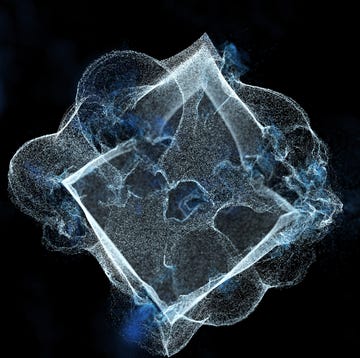
‘Cosmic Fireballs’ Could Explain The Unexplainable
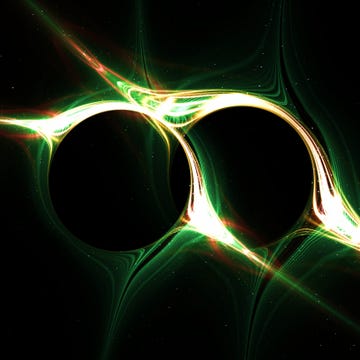
Is This the Answer to the 'Final Parsec Problem'?

Scientists Spots Rare ‘Missing Link’ Black Hole
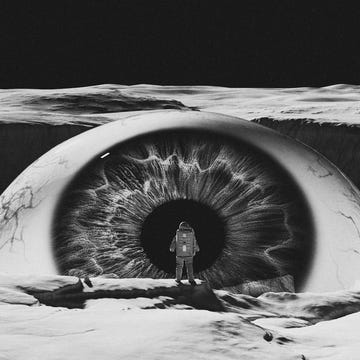
Strange Eyeball Super-Earth May Be Habitable

This Is What Flicked on the Lights of the Universe
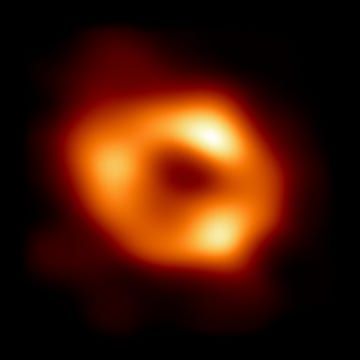
Scientists Spot the Milky Way’s ‘Exhaust Vent’
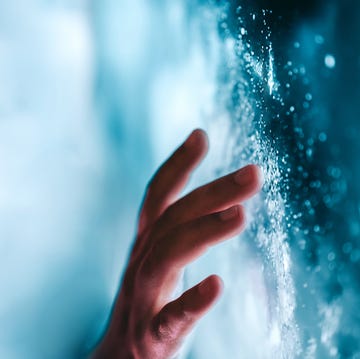
Can Quantum Physics Explain This Cosmic Mystery?

3 New Super-Earths Just Dropped

Can We Detect the Grav Waves of Alien Warp Drives?
share this!
April 13, 2023
This article has been reviewed according to Science X's editorial process and policies . Editors have highlighted the following attributes while ensuring the content's credibility:
fact-checked
peer-reviewed publication
trusted source

Quantum 'magic' could help explain the origin of spacetime
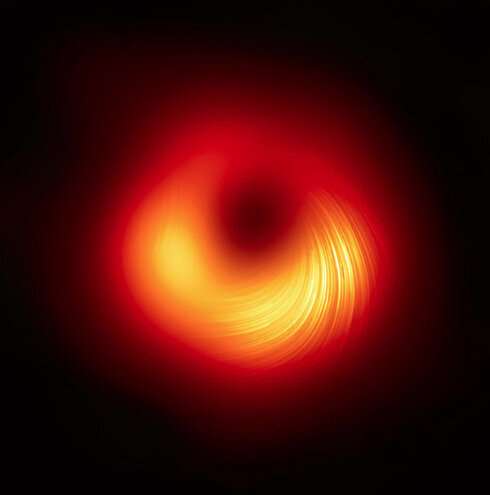
A quantum property dubbed "magic" could be the key to explaining how space and time emerged, a new mathematical analysis by three RIKEN physicists suggests. The research is published in the journal Physical Review D .
It's hard to conceive of anything more basic than the fabric of spacetime that underpins the universe, but theoretical physicists have been questioning this assumption. "Physicists have long been fascinated about the possibility that space and time are not fundamental, but rather are derived from something deeper," says Kanato Goto of the RIKEN Interdisciplinary Theoretical and Mathematical Sciences (iTHEMS).
This notion received a boost in the 1990s, when theoretical physicist Juan Maldacena related the gravitational theory that governs spacetime to a theory involving quantum particles . In particular, he imagined a hypothetical space—which can be pictured as being enclosed in something like an infinite soup can, or "bulk"—holding objects like black holes that are acted on by gravity. Maldacena also imagined particles moving on the surface of the can, controlled by quantum mechanics . He realized that mathematically a quantum theory used to describe the particles on the boundary is equivalent to a gravitational theory describing the black holes and spacetime inside the bulk.
"This relationship indicates that spacetime itself does not exist fundamentally, but emerges from some quantum nature," says Goto. "Physicists are trying to understand the quantum property that is key."
The original thought was that quantum entanglement —which links particles no matter how far they are separated—was the most important factor: the more entangled particles on the boundary are, the smoother the spacetime within the bulk.
"But just considering the degree of entanglement on the boundary cannot explain all the properties of black holes, for instance, how their interiors can grow," says Goto.
So Goto and iTHEMS colleagues Tomoki Nosaka and Masahiro Nozaki searched for another quantum quantity that could apply to the boundary system and could also be mapped to the bulk to describe black holes more fully. In particular, they noted that black holes have a chaotic characteristic that needs to be described.
"When you throw something into a black hole, information about it gets scrambled and cannot be recovered," says Goto. "This scrambling is a manifestation of chaos."
The team came across "magic," which is a mathematical measure of how difficult a quantum state is to simulate using an ordinary classical (non-quantum) computer. Their calculations showed that in a chaotic system almost any state will evolve into one that is "maximally magical"—the most difficult to simulate.
This provides the first direct link between the quantum property of magic and the chaotic nature of black holes. "This finding suggests that magic is strongly involved in the emergence of spacetime," says Goto.
Journal information: Physical Review D
Provided by RIKEN
Explore further
Feedback to editors

Saturday Citations: Teen seals photobomb research site; cell phones are safe; serotonin and emotional resilience
Sep 7, 2024

Pottery shards provide insight into the lives and trade networks of enslaved people in the Cayman Islands

Nanoscale silver exhibits intrinsic self-healing abilities without external intervention

Two astronauts are left behind in space as Boeing's troubled capsule returns to Earth empty

Just how rare is a rare-colored lobster? Scientists say answer could be under the shell

Massive merger: Study reveals evidence for origin of supermassive black hole at galaxy's center
Sep 6, 2024

Neolithic bones reveal isolated Yersinia pestis infections, not pandemics

New quantum error correction method uses 'many-hypercube codes' while exhibiting beautiful geometry

Solving the side effect problem of siRNA drugs for genetic disease treatment

Researchers advance new class of quantum critical metal that could advance electronic devices
Relevant physicsforums posts, why does my ceiling glow in the dark.
10 hours ago
How does output voltage of an electric guitar work?
Looking for info on old, unlabeled geissler tubes, brownian motions and quantifying randomness in physical systems.
Sep 2, 2024
Container in an MRI room
Sep 1, 2024
Hysteresis of a Compressed Solid
Aug 30, 2024
More from Other Physics Topics
Related Stories

Wormholes help resolve black hole information paradox
Mar 8, 2022

Synthetic black holes radiate like real ones
Nov 11, 2022

Uncovering the massive quantum mysteries of black holes
Oct 31, 2022

Black holes with 'dreadlocks' offer insight into quantum matter
Nov 6, 2017

Did physicists make a wormhole in the lab? Not quite, but a new experiment hints at the future of quantum simulations
Dec 12, 2022

Holographic image of a black hole proposed in a graphene flake
Jul 25, 2018
Recommended for you

Why are black holes stable against their own gravity?

Researchers make sound waves travel in one direction only, with implications for electromagnetic wave technology

Physicists capture images of atoms flowing along a boundary without resistance despite obstacles in their path

Researchers create a one-dimensional gas out of light
Let us know if there is a problem with our content.
Use this form if you have come across a typo, inaccuracy or would like to send an edit request for the content on this page. For general inquiries, please use our contact form . For general feedback, use the public comments section below (please adhere to guidelines ).
Please select the most appropriate category to facilitate processing of your request
Thank you for taking time to provide your feedback to the editors.
Your feedback is important to us. However, we do not guarantee individual replies due to the high volume of messages.
E-mail the story
Your email address is used only to let the recipient know who sent the email. Neither your address nor the recipient's address will be used for any other purpose. The information you enter will appear in your e-mail message and is not retained by Phys.org in any form.
Newsletter sign up
Get weekly and/or daily updates delivered to your inbox. You can unsubscribe at any time and we'll never share your details to third parties.
More information Privacy policy
Donate and enjoy an ad-free experience
We keep our content available to everyone. Consider supporting Science X's mission by getting a premium account.
E-mail newsletter

Suggested Searches
- Climate Change
- Expedition 64
- Mars perseverance
- SpaceX Crew-2
- International Space Station
- View All Topics A-Z
Humans in Space
Earth & climate, the solar system, the universe, aeronautics, learning resources, news & events.
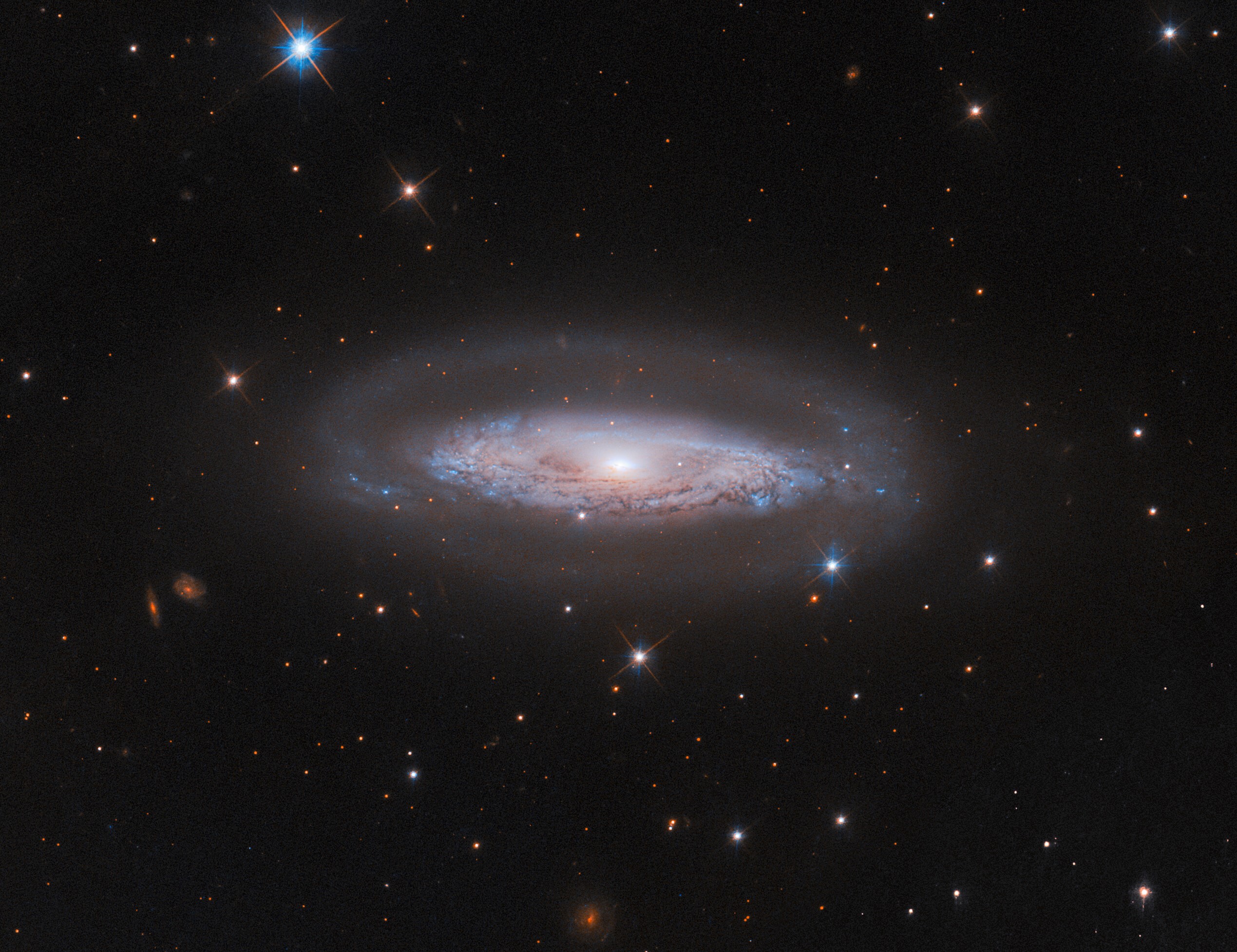
Hubble Examines a Busy Galactic Center
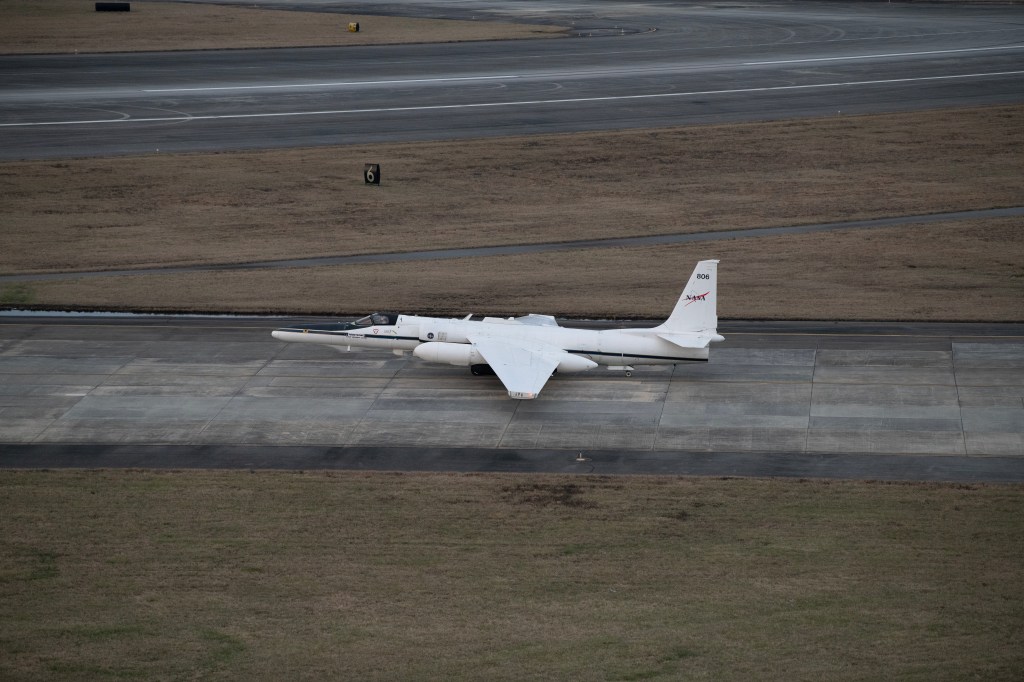
NASA Earth Scientists Take Flight, Set Sail to Verify PACE Satellite Data

What’s Up: September 2024 Skywatching Tips from NASA
- Search All NASA Missions
- A to Z List of Missions
- Upcoming Launches and Landings
- Spaceships and Rockets
- Communicating with Missions
- James Webb Space Telescope
- Hubble Space Telescope
- Why Go to Space
- Commercial Space
- Destinations
- Living in Space
- Explore Earth Science
- Earth, Our Planet
- Earth Science in Action
- Earth Multimedia
- Earth Science Researchers
- Pluto & Dwarf Planets
- Asteroids, Comets & Meteors
- The Kuiper Belt
- The Oort Cloud
- Skywatching
- The Search for Life in the Universe
- Black Holes
- The Big Bang
- Dark Energy & Dark Matter
- Earth Science
- Planetary Science
- Astrophysics & Space Science
- The Sun & Heliophysics
- Biological & Physical Sciences
- Lunar Science
- Citizen Science
- Astromaterials
- Aeronautics Research
- Human Space Travel Research
- Science in the Air
- NASA Aircraft
- Flight Innovation
- Supersonic Flight
- Air Traffic Solutions
- Green Aviation Tech
- Drones & You
- Technology Transfer & Spinoffs
- Space Travel Technology
- Technology Living in Space
- Manufacturing and Materials
- Science Instruments
- For Kids and Students
- For Educators
- For Colleges and Universities
- For Professionals
- Science for Everyone
- Requests for Exhibits, Artifacts, or Speakers
- STEM Engagement at NASA
- NASA's Impacts
- Centers and Facilities
- Directorates
- Organizations
- People of NASA
- Internships
- Our History
- Doing Business with NASA
- Get Involved
NASA en Español
- Aeronáutica
- Ciencias Terrestres
- Sistema Solar
- All NASA News
- Video Series on NASA+
- Newsletters
- Social Media
- Media Resources
- Upcoming Launches & Landings
- Virtual Guest Program
- Image of the Day
- Sounds and Ringtones
- Interactives
- STEM Multimedia

NASA Invites Social Creators to Experience Launch of Europa Clipper Mission
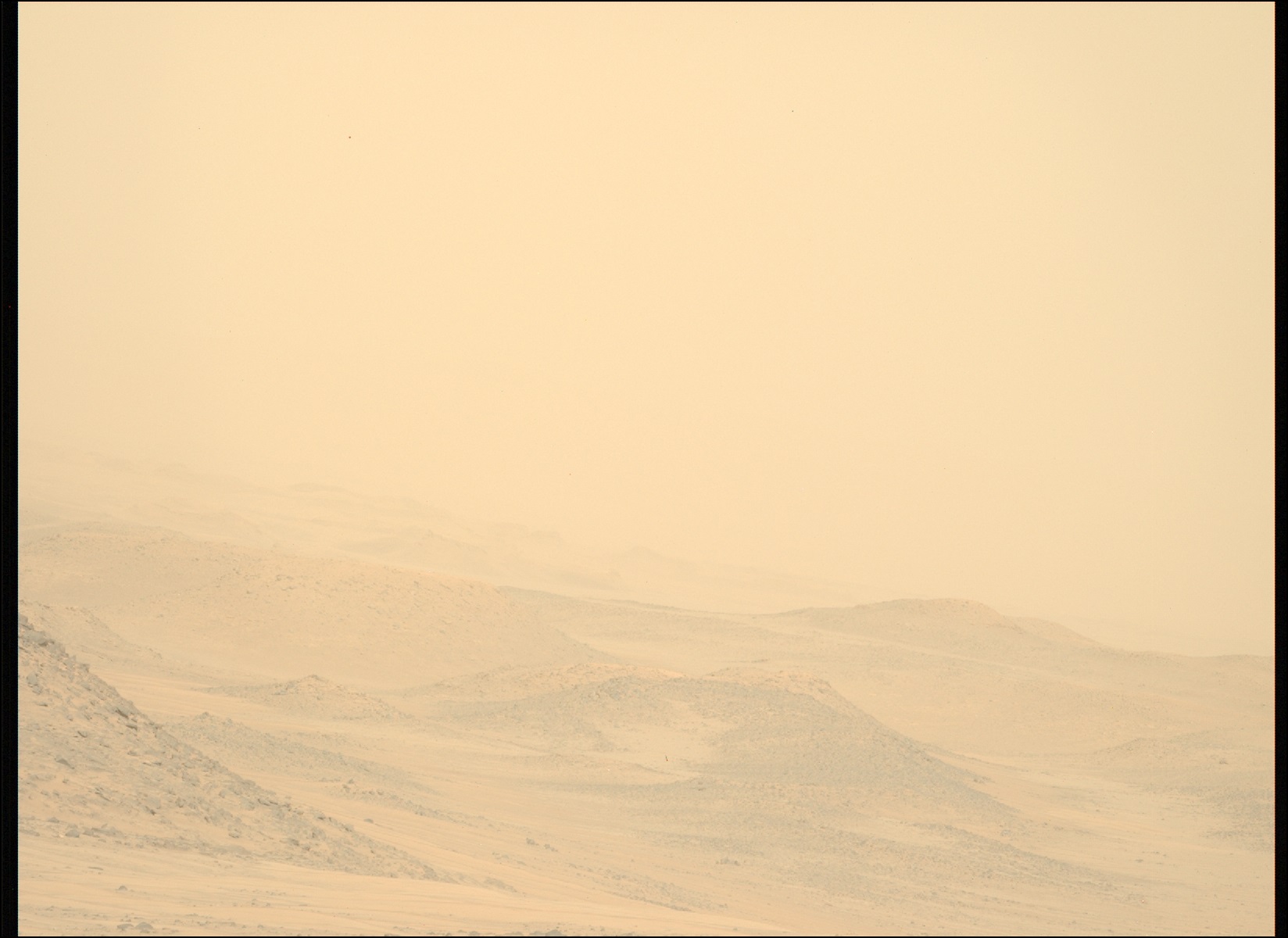
Persevering Through the Storm
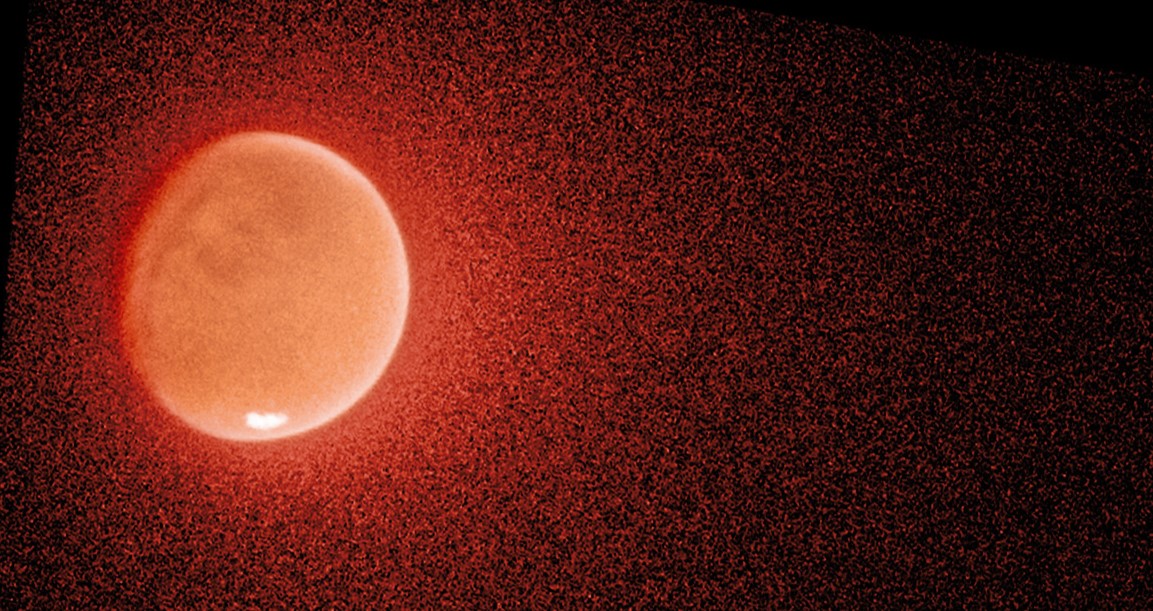
NASA’s Hubble, MAVEN Help Solve the Mystery of Mars’ Escaping Water

NASA Astronaut Don Pettit’s Science of Opportunity on Space Station

NASA, Boeing Optimizing Vehicle Assembly Building High Bay for Future SLS Stage Production

NASA Seeks Input for Astrobee Free-flying Space Robots
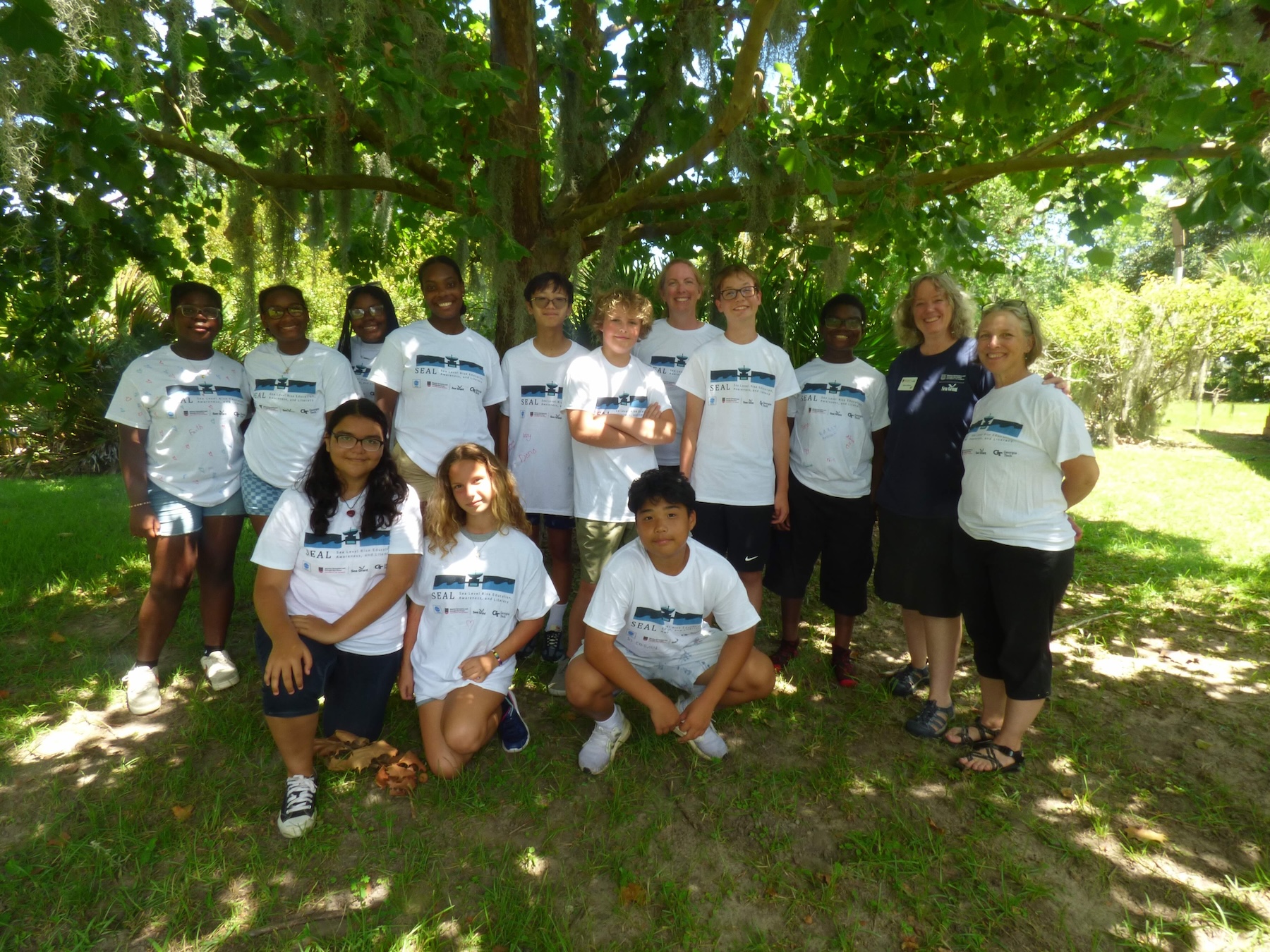
NASA Summer Camp Inspires Future Climate Leaders

NASA Mission Gets Its First Snapshot of Polar Heat Emissions

Artemis IV: Gateway Gadget Fuels Deep Space Dining
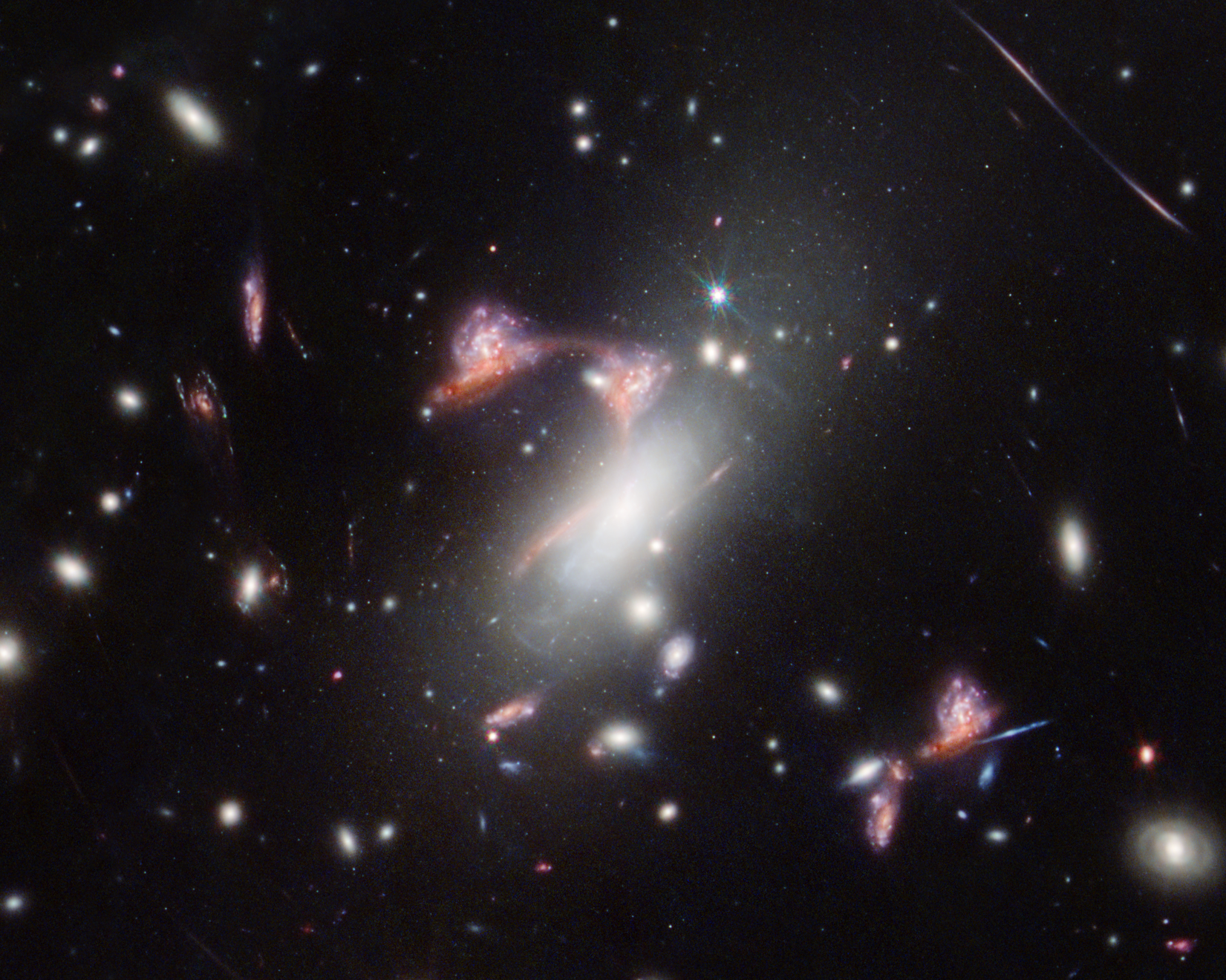
NASA’s Webb Reveals Distorted Galaxy Forming Cosmic Question Mark

NASA’s Mini BurstCube Mission Detects Mega Blast
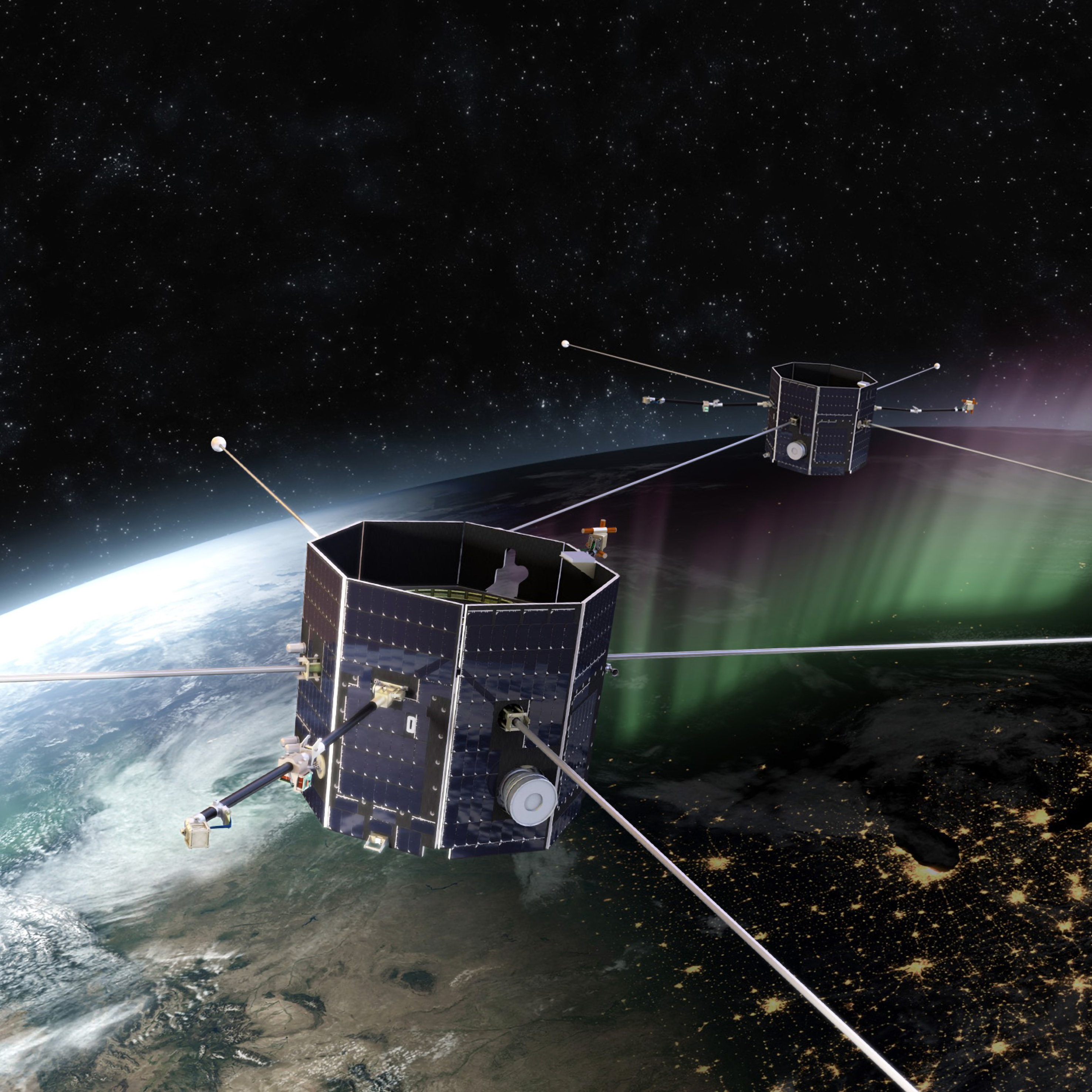
NASA Tunnel Generates Decades of Icy Aircraft Safety Data

Research Plane Dons New Colors for NASA Hybrid Electric Flight Tests

NASA G-IV Plane Will Carry Next-Generation Science Instrument
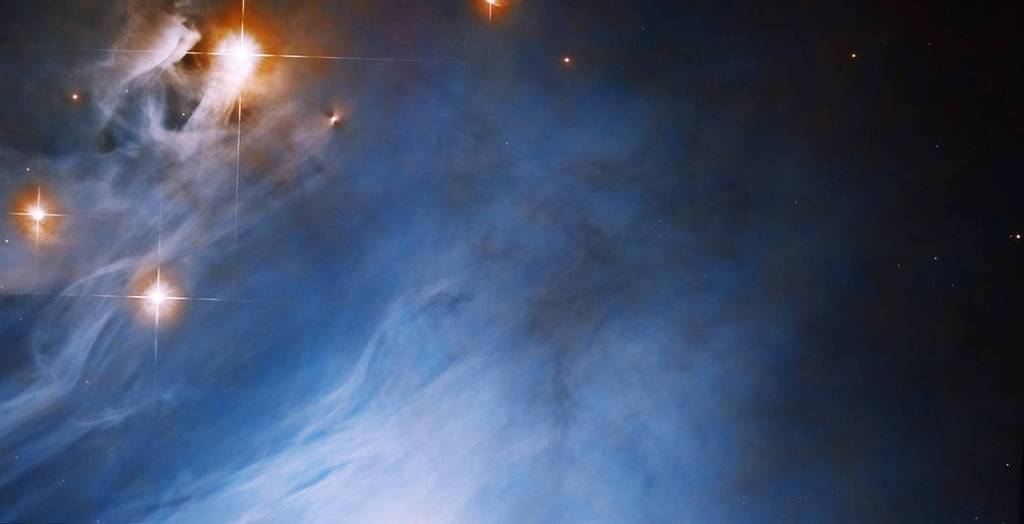
OSAM-1 Partnership Opportunity: Request for Information
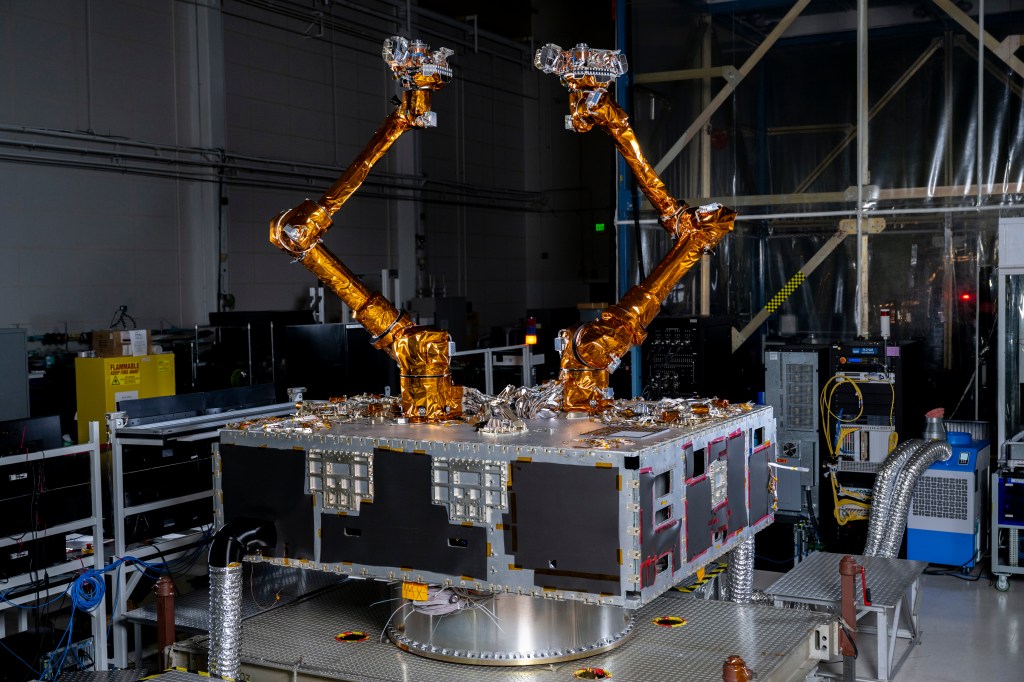
NASA to Support DARPA Robotic Satellite Servicing Program

NASA JPL Developing Underwater Robots to Venture Deep Below Polar Ice
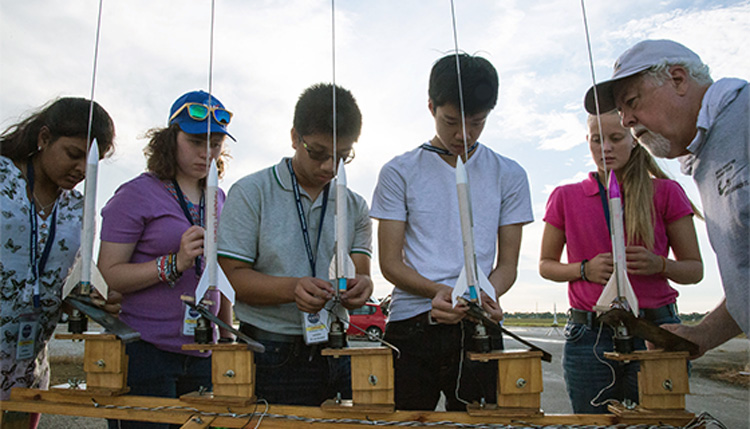
Learn Math with NASA Science

Eclipses Create Atmospheric Gravity Waves, NASA Student Teams Confirm

La NASA invita a los medios al lanzamiento de Europa Clipper

El X-59 de la NASA avanza en las pruebas de preparación para volar

La NASA invita a creadores de las redes sociales al lanzamiento de la misión Europa Clipper
Space place: the land of magic windows.

Educators, Students
Grade Levels
Waves, Light
Other Multimedia, Play and Learn
In the Land of Magic Windows, you can learn about the electromagnetic spectrum and see objects in space through different kinds of light. Go to Website
Get the Reddit app
Subreddit for the weekly horror podcast The Magnus Archives produced by [The Rusty Quill](http://rustyquill.com/)
Somehow, TMA and an old Russian sci-fi book about magic researchers crossed over in my head, and out of that was born an AU where everything is the same except the setting is not modern London but '80's Moscow, so I decided to make some floating heads (for starters)! Currently working on the S1 crew
By continuing, you agree to our User Agreement and acknowledge that you understand the Privacy Policy .
Enter the 6-digit code from your authenticator app
You’ve set up two-factor authentication for this account.
Enter a 6-digit backup code
Create your username and password.
Reddit is anonymous, so your username is what you’ll go by here. Choose wisely—because once you get a name, you can’t change it.

Reset your password
Enter your email address or username and we’ll send you a link to reset your password
Check your inbox
An email with a link to reset your password was sent to the email address associated with your account
Choose a Reddit account to continue
Lucky alignment of 2 spacecraft reveals how solar wind gets a magnetic push
"We didn't initially realize that Parker and Solar Orbiter were measuring the same thing at all — when we connected the two, that was a real eureka moment."
Our sun is far from the smooth, unvarying ball of light we see in the sky. Up close, its "surface" rumbles with powerful eddies that routinely burp superheated material into space.
Astronomers have long wondered just how this blasted material — most commonly, streams of charged particles called the solar wind — heats up and accelerates to speeds of more than 310 miles (500 kilometers) per second — long after it exits the sun .
A team of heliophysicists have now found compelling evidence that energy-packed plasma waves known as Alfvén waves are capable of pumping enough energy into streams of solar wind to propel them to their unexpectedly high speeds.
"This discovery is one of the key puzzle pieces to answer the 50-year-old question of how the solar wind is accelerated and heated in the innermost portions of the heliosphere," Adam Szabo, who is the Parker Solar Probe mission science lead at NASA and was not involved with the new research, said in a recent NASA statement .
"It took over half a century to confirm that Alfvenic wave acceleration and heating are important processes, and they happen in approximately the way we think they do," added John Belcher, emeritus professor of physics from the Massachusetts Institute of Technology who co-discovered Alfvén waves in the solar wind and was also not involved in the new research.
Related: Solar wind: What is it and how does it affect Earth?
The fresh clue to the decades-old mystery emerged thanks to a chance lineup of two sun-studying spacecraft that provided scientists a rare front-row seat to study the same patch of solar wind across two days.
Get the Space.com Newsletter
Breaking space news, the latest updates on rocket launches, skywatching events and more!
In February 2022, NASA's Parker Solar Probe detected a pocket of solar wind blasting from the sun's outer atmosphere, or corona . The probe, which is the fastest human-made object in history , recorded the wind to be traveling at 242 miles (390 km) per second along with an abundance of energy-packed Alfvén waves, which are known to transport energy throughout the solar wind the same way sound waves ferry energy via air on Earth .
Two days later, the European Space Agency's (ESA) Solar Orbiter , which was then flying beyond the orbit of Venus, recorded the same patch of solar wind to be traveling even faster, at 317 miles (510 km) per second. Solar Orbiter's instruments showed that the Alfvén waves had nearly vanished, according to a paper published by the researchers on Aug. 29 in the journal Science.
Study lead author Yeimy Rivera of the Center for Astrophysics | Harvard & Smithsonian (CfA) in Massachusetts and her colleagues compared data from the two spacecraft. They found the energy gained by the plasma matched the energy lost by Alfvén waves, meaning the waves indeed pump enough energy into the solar wind to accelerate it.
"Before this work, Alfvén waves had been suggested as a potential energy source, but we didn't have definitive proof," Rivera said in a statement by ESA .
"We didn't initially realize that Parker and Solar Orbiter were measuring the same thing at all," study co-author Samuel Badman, also of CfA, said in the NASA statement. "When we connected the two, that was a real eureka moment."
— Parker Solar Probe and Solar Orbiter team up to tackle 65-year-old sun mystery
— Solar Orbiter traces solar wind back to its mysterious source for 1st time
— See the sun's surface rage as solar maximum approaches (photo)
Scientists think the added energy arises from abrupt reversals in the directions of the sun's magnetic field called "switchbacks," which are known to become more distinct and powerful close to the sun. As solar wind ejected from the sun wafts away, Alfvén waves in the form of switchbacks provide energy sufficient to account for the observed acceleration and added heat of the stream, the new study found.
"These measurements told us that the energy from the switchbacks was both necessary and sufficient to explain the solar wind's evolution as it travels away from the sun," the researchers wrote in The Conversation .
Our sun, of course, is the only star in the universe whose wind scientists can study directly. "What we learned about our sun potentially applies at least to other sun-type stars, and perhaps other types of stars that have winds," said Badman.
Join our Space Forums to keep talking space on the latest missions, night sky and more! And if you have a news tip, correction or comment, let us know at: [email protected].
Sharmila Kuthunur is a Seattle-based science journalist covering astronomy, astrophysics and space exploration. Follow her on X @skuthunur.
'A lot has changed': NOAA is rewriting the book on how to rank solar storms
The sun hides its age with magnetic activity
Boeing's Starliner capsule just landed with no crew aboard. What's next for this astronaut taxi?
Most Popular
- 2 Boeing Starliner capsule lands back on Earth, without astronauts, to end troubled test flight (video)
- 3 Mars leaks faster when closer to the sun
- 4 James Webb Space Telescope zooms in on giant question mark in space (image)
- 5 NASA delays ESCAPADE Mars launch on Blue Origin's giant New Glenn rocket to 2025 to avoid potential cost overruns

How It Works
Expert explanations and breathtaking images ».

World Of Animals
A journey into nature like no other ».

Heroes of Space: Laika the space dog
How one dog went from being a stray on the streets of moscow to the first animal to orbit the earth.
Laika had several nicknames before they settled on her name. The American press called her ‘Muttnik’. Image credit: NASA
The year was 1957 and the Space Race between the Soviet Union and the United States was just starting to gain speed. After the success of Sputnik 1, the first artificial Earth satellite, Soviet leader Nikita Khrushchev was keen to instate Soviet domination of space. The 40th anniversary of the Bolshevik Revolution on 7 November provided the perfect opportunity for another successful Soviet launch, and Khrushchev demanded a “space spectacular” to stun the world. It came in the most unlikely of packages – a three-year-old dog named Laika.
Laika had spent her life as a stray on the streets of Moscow, and stray dogs had already been adopted by the space mission due to their ‘scrappy’ natures and ability to withstand extreme temperatures and hunger. Laika stood out from other dogs as she had a calm temperament and small size, weighing about five kilograms (11 pounds). Vladimir Yazdovsky, who prepared Laika for her flight, described her as “quiet and charming.”
Laika was not the first dog that was to be sent into the sky, both the US and the Soviet Union had sent animals into sub-orbital flight, and two other dogs – Mushka and Albina were also trained for the Sputnik 2 launch. Laika and the other dogs embarked on an intensive period of training before the much-anticipated flight. Over their training they were enclosed in progressively smaller cages to prepare them for the confines of the spacecraft. Laika was trained to eat a special gel high in nutrition that would serve as her food during her flight and was also placed in machines that stimulated the noise and acceleration she would experience during launch.
The spacecraft itself was similarly prepared for its passenger. Although there were only four weeks to build the craft, it was fitted with a variety of devices to keep Laika alive. There was an oxygen generator to absorb carbon dioxide, a temperature-activated fan and it was stocked with enough gelatinous food to keep the dog alive for seven days.
Two other dogs – Mushka and Albina were also trained for the Sputnik 2 launch. Image credit: NASA
Laika was chosen, while Albina would be the backup and Mushka the control dog. All the animals were fitted with cables to monitor heart rate and blood pressure. However, nobody involved was under the impression that Laika would survive, as the technology to de-orbit had not yet been developed. Before she was placed in the spaceship Laika enjoyed her last day of freedom in the home of one of the scientists, who took her home to play with his children.
Laika was placed in the satellite on 31 October 1957 and was fitted with a harness and chains that would control her movement. While in Sputnik 2 Laika could stand, sit and lie down, she would be unable to turn around. In the early hours of 3 November liftoff finally occurred, but there were immediate problems. Laika’s heart rate jumped to 240 beats per minute, compared to 103 before launch, while her respiration was almost four times faster. Crucially, the Blok A core of Sputnik 2’s nose cone didn’t separate, which stopped the thermal control system operating properly, raising the temperature to 40 degrees Celsius (104 degrees Fahrenheit). Although Laika’s pulse slowly returned to normal, after five to seven hours she was dead.
For years after there would be conflicting reports on the nature of Laika’s death. However, the truth eventually emerged – the fact that it had always been known that Laika would die on the flight sparked a wave of outrage among animal welfare groups. Although the ethical justification of the mission is still disputed today, Laika paved the way for human exploration of space.

Need more space? You can get 5 issues of All About Space Magazine for just £ 5/€5/ $5 for the latest amazing news from the final frontier!
Tags: Albina , Animal Astronauts , Bolshevik Revolution , Dog , Laika , Mushka , soviet union , space , space exploration , United States
A Touch of Magic - Digital Download
The Palmist by Andrew Lam -Performed by James Naughton -A chance encounter on a bus between a fortune-teller and a teenage boy.
The Monkey's Paw by W.W. Jacobs -Performed by John Lithgow -A wonderful ghost story about a trinket with terrible powers. Buy this story on mp3!
The Occasional Garden b y Saki -Performed by Daniel Gerroll -If you can't grow a garden... poof!... you can rent one.
The Balloon by Donald Barthelme -Performed by Maria Tucci -There's something suddenly in the sky in midtown Manhattan...
The Year of Silence by Kevin Brockmeier -Performed by Anthony Rapp -What if everything went quiet? Buy this story on mp3!
The Sixth Borough by Jonathan Safran Foer -Performed by Jerry Zaks -Yes, New York had a Sixth Borough, but it drifted away... Buy this story on mp3!
Drunken Mimi by Aimee Bender -Performed by Bernadette Quigley -A romance between a mermaid and an imp Buy this story on mp3!
The Little Green Monster by Haruki Murakami -Performed by Dana Ivey -A piece of Murakami magic: is this a monster I see before me?
"As usual for ' Selected Shorts ,' this is a high-quality, entertaining collection."... AudioFile Magazine
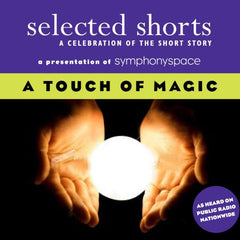
Customer Login
Product categories.
- Selected Shorts Digital Downloads
- Single Story Digital Downloads
- A-Z Publications
Annual Review of Psychology
Volume 75, 2024, review article, open access, beyond the tricks: the science and comparative cognition of magic.
- Elias Garcia-Pelegrin 1 , Alexandra K. Schnell 2 , Clive Wilkins 2 , and Nicola S. Clayton 2
- View Affiliations Hide Affiliations Affiliations: 1 Department of Psychology, National University of Singapore, Singapore; email: [email protected] 2 Department of Psychology, University of Cambridge, Cambridge, United Kingdom
- Vol. 75:269-293 (Volume publication date January 2024) https://doi.org/10.1146/annurev-psych-012723-100945
- Copyright © 2024 by the author(s). This work is licensed under a Creative Commons Attribution 4.0 International License, which permits unrestricted use, distribution, and reproduction in any medium, provided the original author and source are credited. See credit lines of images or other third-party material in this article for license information
Magic is an art form that has fascinated humans for centuries. Recently, the techniques used by magicians to make their audience experience the impossible have attracted the attention of psychologists, who, in just a couple of decades, have produced a large amount of research regarding how these effects operate, focusing on the blind spots in perception and roadblocks in cognition that magic techniques exploit. Most recently, this investigation has given a pathway to a new line of research that uses magic effects to explore the cognitive abilities of nonhuman animals. This new branch of the scientific study of magic has already yielded new evidence illustrating the power of magic effects as a psychological tool for nonhuman animals. This review aims to give a thorough overview of the research on both the human and nonhuman perception of magic effects by critically illustrating the most prominent works of both fields of inquiry.
Article metrics loading...
Full text loading...
Literature Cited
- Ariely D , Carmon Z 2000 . Gestalt characteristics of experiences: the defining features of summarized events. J. Behav. Decis. Mak. 13 : 2 191– 201 [Google Scholar]
- Ariely D , Levav J. 2000 . Sequential choice in group settings: taking the road less traveled and less enjoyed. J. Consum. Res. 27 : 3 279– 90 [Google Scholar]
- Ariely D , Zauberman G. 2000 . On the making of an experience: the effects of breaking and combining experiences on their overall evaluation. J. Behav. Decis. Mak. 13 : 2 219– 32 [Google Scholar]
- Ascanio A. 1964 . Consideraciones sobre la misdirection. Misdirection 1 : 4– 6 [Google Scholar]
- Ascanio A. 2005 (1958) . Conception of the magical atmosphere. The Magic of Ascanio , Vol. 1 The Structural Conception of Magic M Sisti, A Escamilla 10– 58 . New York: Paginas [Google Scholar]
- Barnhart AS. 2010 . The exploitation of Gestalt principles by magicians. Perception 39 : 9 1286– 89 [Google Scholar]
- Bartlett FC. 1932 . Remembering: A Study in Experimental and Social Psychology Cambridge, UK: Cambridge Univ. Press [Google Scholar]
- Baumgartner H , Sujan M , Padgett D. 1997 . Patterns of affective reactions to advertisements: the integration of moment-to-moment responses into overall judgments. J. Mark. Res. 34 : 2 219– 32 [Google Scholar]
- Beth T , Ekroll V. 2015 . The curious influence of timing on the magical experience evoked by conjuring tricks involving false transfer: decay of amodal object permanence?. Psychol. Res. 79 : 4 513– 22 [Google Scholar]
- Billard P , Clayton NS , Jozet-Alves C. 2020a . Cuttlefish retrieve whether they smelt or saw a previously encountered item. Sci. Rep. 10 : 5413 [Google Scholar]
- Billard P , Schnell AK , Clayton NS , Jozet-Alves C. 2020b . Cuttlefish show flexible and future-dependent foraging cognition. Biol. Lett. 16 : 2 https://doi.org/10.1098/rsbl.2019.0743 [Google Scholar]
- Binet A. 1896 . Psychology of prestidigitation. Annual Report of the Board of Regents of the Smithsonian Institution 555– 71 . Washington, DC: Gov. Print. Off. [Google Scholar]
- Bobrowicz K , Osvath M. 2019 . Cognition in the fast lane: Ravens’ gazes are half as short as humans’ when choosing objects. Anim. Behav. Cogn. 6 : 2 81– 97 [Google Scholar]
- Boström JE , Dimitrova M , Canton C , Håstad O , Qvarnström A , Ödeen A. 2016 . Ultra-rapid vision in birds. PLOS ONE 11 : 3 3– 9 [Google Scholar]
- Bräuer J , Hanus D. 2012 . Fairness in non-human primates?. Soc. Justice Res. 25 : 3 256– 76 [Google Scholar]
- Bridgeman B , Van der Heijden AHC , Velichkovsky BM. 1994 . A theory of visual stability across saccadic eye movements. Behav. Brain Sci. 17 : 2 247– 58 [Google Scholar]
- Brosnan SF , De Waal FBM. 2003 . Monkeys reject unequal pay. Nature 425 : 6955 297– 99 [Google Scholar]
- Brown C , Garwood MP , Williamson JE. 2012 . It pays to cheat: tactical deception in a cephalopod social signalling system. Biol. Lett. 8 : 5 729– 32 [Google Scholar]
- Bruno J. 1978 . Anatomy of Misdirection Stony Brook, NY: Stony Brook Press [Google Scholar]
- Bugnyar T , Heinrich B. 2006 . Pilfering ravens, Corvus corax , adjust their behaviour to social context and identity of competitors. Anim. Cogn. 9 : 4 369– 76 [Google Scholar]
- Bugnyar T , Kotrschal K. 2002 . Observational learning and the raiding of food caches in ravens, Corvus corax : Is it “tactical” deception?. Anim. Behav. 64 : 2 185– 95 [Google Scholar]
- Byrne RW. 1996 . Machiavellian intelligence. Evol. Anthropol. 5 : 5 172– 80 [Google Scholar]
- Byrne RW , Whiten A. 1985 . Tactical deception of familiar individuals in baboons ( Papio ursinus ). Anim. Behav. 33 : 2 669– 73 [Google Scholar]
- Call J , Tomasello M. 1999 . A nonverbal false belief task: the performance of children and great apes. Child Dev 70 : 2 381– 95 [Google Scholar]
- Call J , Tomasello M. 2008 . Does the chimpanzee have a theory of mind? 30 years later. Trends Cogn. Sci. 12 : 5 187– 92 [Google Scholar]
- Camerer CF , Ho TH. 1994 . Violations of the betweenness axiom and nonlinearity in probability. J. Risk Uncertain. 8 : 2 167– 96 [Google Scholar]
- Cheke LG , Clayton NS. 2012 . Eurasian jays ( Garrulus glandarius ) overcome their current desires to anticipate two distinct future needs and plan for them appropriately. Biol. Lett. 8 : 2 171– 75 [Google Scholar]
- Clayton NS , Dally JM , Emery NJ. 2007 . Social cognition by food-caching corvids: the western scrub-jay as a natural psychologist. Philos. Trans. R. Soc. B 362 : 1480 507– 22 [Google Scholar]
- Clayton NS , Dickinson A. 1998 . Episodic-like memory during cache recovery by scrub jays. Nature 395 : 6699 272– 74 [Google Scholar]
- Clayton NS , Wilkins C. 2017 . Memory, mental time travel and the Moustachio Quartet. Interface Focus 7 : 3 https://doi.org/10.1098/rsfs.2016.0112 [Google Scholar]
- Clayton NS , Yu KS , Dickinson A. 2003 . Interacting cache memories: evidence for flexible memory use by Western scrub-jays ( Aphelocoma californica ). J. Exp. Psychol. Anim. Behav. Process. 29 : 1 14– 22 [Google Scholar]
- Correia SPC , Dickinson A , Clayton NSS. 2007 . Western scrub-jays anticipate future needs independently of their current motivational state. Curr. Biol. 17 : 10 856– 61 [Google Scholar]
- Cui J , Otero-Millan J , Macknik S , King M , Martinez-Conde S. 2011 . Stronger perception of magic without social misdirection. J. Vis. 11 : 11 475 [Google Scholar]
- Dally JM , Emery NJ , Clayton NS. 2005 . Cache protection strategies by western scrub-jays, Aphelocoma californica : implications for social cognition. Anim. Behav. 70 : 6 1251– 63 [Google Scholar]
- Dally JM , Emery NJ , Clayton NS. 2006 . Food-caching western scrub-jays keep track of who was watching when. Science 312 : 5780 1662– 65 [Google Scholar]
- Dally JM , Emery NJ , Clayton NS. 2010 . Avian theory of mind and counter espionage by food-caching western scrub-jays ( Aphelocoma californica ). Eur. J. Dev. Psychol. 7 : 1 17– 37 [Google Scholar]
- Danek AH , Öllinger M , Fraps T , Grothe B , Flanagin VL. 2015 . An fMRI investigation of expectation violation in magic tricks. Front. Psychol. 6 : https://doi.org/10.3389/fpsyg.2015.00084 [Google Scholar]
- de Waal FBM. 1986 . Of chimpanzees. Deception: Perspectives on Human and Nonhuman Deceit RW Mitchell, NS Thompson 224– 25 . Albany, NY: SUNY Press [Google Scholar]
- DeMartini DG , Ghoshal A , Pandolfi E , Weaver AT , Baum M , Morse DE. 2013 . Dynamic biophotonics: Female squid exhibit sexually dimorphic tunable leucophores and iridocytes. J. Exp. Biol. 216 : 19 3733– 41 [Google Scholar]
- Dukas R , Kamil AC. 2000 . The cost of limited attention in blue jays. Behav. Ecol. 11 : 5 502– 6 [Google Scholar]
- Dukas R , Kamil AC. 2001 . Limited attention: the constraint underlying search image. Behav. Ecol. 12 : 2 192– 99 [Google Scholar]
- Ekroll V , Sayim B , Wagemans J. 2017 . The other side of magic: the psychology of perceiving hidden things. Perspect. Psychol. Sci. 12 : 1 91– 106 [Google Scholar]
- Ekroll V , Wagemans J. 2016 . Conjuring deceptions: fooling the eye or fooling the mind?. Trends Cogn. Sci. 20 : 7 486– 89 [Google Scholar]
- Emery NJ , Clayton NS. 2001 . Effects of experience and social context on prospective caching strategies by scrub jays. Nature 414 : 6862 443– 46 [Google Scholar]
- Emery NJ , Dally JM , Clayton NS. 2004 . Western scrub-jays ( Aphelocoma californica ) use cognitive strategies to protect their caches from thieving conspecifics. Anim. Cogn. 7 : 1 37– 43 [Google Scholar]
- Finn JK , Tregenza T , Norman MD. 2009 . Defensive tool use in a coconut-carrying octopus. Curr. Biol. 19 : 23 R1069– 70 [Google Scholar]
- Fox DM , Mundinano IC , Bourne JA. 2019 . Prehensile kinematics of the marmoset monkey: implications for the evolution of visually-guided behaviors. J. Comp. Neurol. 527 : 9 1495– 507 [Google Scholar]
- Fragaszy DM , Crast J 2016 . Functions of the hand in primates. The Evolution of the Primate Hand: Anatomical, Developmental, Functional, and Paleontological Evidence TL Kivell, P Lemelin, BG Richmond, D Schmitt 313– 44 . New York: Springer [Google Scholar]
- Garcia-Pelegrin E. 2022 . The comparative science of magic: using sleight of hand as a tool to investigate cognition in diverse taxa PhD Diss. Univ. Cambridge Cambridge, UK: [Google Scholar]
- Garcia-Pelegrin E , Miller R , Wilkins C , Clayton NS. 2023 . Manual action expectation and biomechanical ability in three species of New World monkey. Curr. Biol. 33 : 9 1803– 8.e2 [Google Scholar]
- Garcia-Pelegrin E , Schnell AK , Wilkins C , Clayton NS. 2020 . An unexpected audience. Science 369 : 6510 1424– 26 [Google Scholar]
- Garcia-Pelegrin E , Schnell AK , Wilkins C , Clayton NS. 2021a . Exploring the perceptual inabilities of Eurasian jays ( Garrulus glandarius ) using magic effects. PNAS 118 : 24 e2026106118 [Google Scholar]
- Garcia-Pelegrin E , Schnell AK , Wilkins C , Clayton NS. 2022a . Could it be proto magic? Deceptive tactics in nonhuman animals resemble magician's misdirection. Psychol. Conscious. Theory Res. Pract. 9 : 3 267– 84 [Google Scholar]
- Garcia-Pelegrin E , Wilkins C , Clayton NS. 2021b . The ape that lived to tell the tale. The evolution of the art of storytelling and its relationship to mental time travel and theory of mind. Front. Psychol. 12 : https://doi.org/10.3389/fpsyg.2021.755783 [Google Scholar]
- Garcia-Pelegrin E , Wilkins C , Clayton NS. 2022b . Investigating expert performance when observing magic effects. Sci. Rep. 12 : 5141 [Google Scholar]
- Grahn JA , Parkinson JA , Owen AM. 2008 . The cognitive functions of the caudate nucleus. Prog. Neurobiol. 86 : 3 141– 55 [Google Scholar]
- Grimes J. 1996 . On the failure to detect changes in scenes across saccades. Perception 5 : 89– 110 [Google Scholar]
- Haines RF 1991 . A breakdown in simultaneous information processing. Presbyopia Research: From Molecular Biology to Visual Adaptation G Obrecht, LW Stark 171– 75 . Boston: Springer [Google Scholar]
- Hanlon R. 2007 . Cephalopod dynamic camouflage. Curr. Biol. 17 : 11 R400– 4 [Google Scholar]
- Hanlon RT , Naud M-J , Shaw PW , Havenhand JN. 2005 . Transient sexual mimicry leads to fertilization. Nature 433 : 7023 212 [Google Scholar]
- Heesy CP. 2009 . Seeing in stereo: the ecology and evolution of primate binocular vision and stereopsis. Evol. Anthropol. 18 : 1 21– 35 [Google Scholar]
- Howard IP , Rogers BJ. 1995 . Binocular Vision and Stereopsis New York: Oxford Univ. Press [Google Scholar]
- Huffard CL. 2006 . Locomotion by Abdopus aculeatus (Cephalopoda: Octopodidae): walking the line between primary and secondary defenses. J. Exp. Biol. 209 : 19 3697– 707 [Google Scholar]
- Hyman R. 1989 . The psychology of deception. Annu. Rev. Psychol. 40 : 133– 54 [Google Scholar]
- Jozet-Alves C , Bertin M , Clayton NS. 2013 . Evidence of episodic-like memory in cuttlefish. Curr. Biol. 23 : 23 R1033– 35 [Google Scholar]
- Kahneman D , Fredrickson BL , Schreiber CA , Redelmeier DA. 1993 . When more pain is preferred to less: adding a better end. Psychol. Sci. 4 : 6 401– 5 [Google Scholar]
- Kahneman D , Riis J 2005 . Living, and thinking about it: two perspectives on life. The Science of Well-Being FA Huppert, N Baylis, B Keverne 285– 304 . Oxford, UK: Oxford Univ. Press [Google Scholar]
- Kahneman D , Wakker PP , Sarin R. 1997 . Back to Bentham? Explorations of experienced utility. Q. J. Econ. 112 : 2 375– 406 [Google Scholar]
- Kanizsa G , Gerbino W. 1982 . Amodal completion: seeing or thinking?. Organization and Representation in Perception J Beck 167– 90 . Chicago: Lawrence Erlbaum [Google Scholar]
- Kelley TA , Chun MM , Chua K-P. 2003 . Effects of scene inversion on change detection of targets matched for visual salience. J. Vis. 3 : 1 https://doi.org/10.1167/3.1.1 [Google Scholar]
- Kensinger EA. 2004 . Remembering emotional experiences: the contribution of valence and arousal. Rev. Neurosci. 15 : 4 241– 52 [Google Scholar]
- Kensinger EA. 2009 . Remembering the details: effects of emotion. Emot. Rev. 1 : 2 99– 113 [Google Scholar]
- Kerns JG , Cohen JD , MacDonald AW , Cho RY , Stenger VA , Carter CS. 2004 . Anterior cingulate conflict monitoring and adjustments in control. Science 303 : 5660 1023– 26 [Google Scholar]
- Koboroff A , Kaplan G , Rogers LJ. 2008 . Hemispheric specialization in Australian magpies ( Gymnorhina tibicen ) shown as eye preferences during response to a predator. Brain Res. Bull. 76 : 3 304– 6 [Google Scholar]
- Köhler W. 1929 . Gestalt Psychology . New York: Liveright [Google Scholar]
- Kuhn G. 2019 . Experiencing the Impossible: The Science of Magic Cambridge, MA: MIT Press [Google Scholar]
- Kuhn G , Amlani AA , Rensink RA. 2008a . Towards a science of magic. Trends Cogn. Sci. 12 : 9 349– 54 [Google Scholar]
- Kuhn G , Caffaratti HA , Teszka R , Rensink RA. 2014 . A psychologically-based taxonomy of misdirection. Front. Psychol. 5 : https://doi.org/10.3389/fpsyg.2014.01392 [Google Scholar]
- Kuhn G , Findlay JM. 2010 . Misdirection, attention and awareness: Inattentional blindness reveals temporal relationship between eye movements and visual awareness. Q. J. Exp. Psychol. 63 : 1 136– 46 [Google Scholar]
- Kuhn G , Land MF. 2006 . There's more to magic than meets the eye. Curr. Biol. 16 : 22 950– 51 [Google Scholar]
- Kuhn G , Rensink RA. 2016 . The vanishing ball illusion: a new perspective on the perception of dynamic events. Cognition 148 : 64– 70 [Google Scholar]
- Kuhn G , Tatler BW. 2005 . Magic and fixation: Now you don't see it, now you do. Perception 34 : 9 1155– 61 [Google Scholar]
- Kuhn G , Tatler BW. 2011 . Misdirected by the gap: the relationship between inattentional blindness and attentional misdirection. Conscious. Cogn. 20 : 2 432– 36 [Google Scholar]
- Kuhn G , Tatler BW , Cole GG. 2009 . You look where I look! Effect of gaze cues on overt and covert attention in misdirection. Vis. Cogn. 17 : 6–7 925– 44 [Google Scholar]
- Kuhn G , Tatler BW , Findlay JM , Cole GG. 2008b . Misdirection in magic: implications for the relationship between eye gaze and attention. Vis. Cogn. 16 : 2–3 391– 405 [Google Scholar]
- Kuhn G , Thomas C 2022 . What can magic reveal about the brain. Encyclopedia of Behavioral Neuroscience G Koob, S Della Sala 597– 604 . Amsterdam: Elsevier. , 2nd ed.. [Google Scholar]
- Lamont P. 2015 . Problems with the mapping of magic tricks. Front. Psychol. 6 : https://doi.org/10.3389/fpsyg.2015.00855 [Google Scholar]
- Lamont P , Henderson JM , Smith TJ. 2010 . Where science and magic meet: the illusion of a “science of magic. .” Rev. Gen. Psychol. 14 : 1 16– 21 [Google Scholar]
- Lamont P , Wiseman R. 1999 . Magic in Theory: An Introduction to the Theoretical and Psychological Elements of Conjuring Hatfield, UK: Univ. Hertfordshire Press [Google Scholar]
- Legg EW , Clayton NS. 2014 . Eurasian jays ( Garrulus glandarius ) conceal caches from onlookers. Anim. Cogn. 17 : 5 1223– 26 [Google Scholar]
- Levin DT , Simons DJ , Angelone BL , Chabris CF. 2002 . Memory for centrally attended changing objects in an incidental real-world change detection paradigm. Br. J. Psychol. 93 : 3 289– 302 [Google Scholar]
- Mack A , Rock I. 1998 . Inattentional blindness: perception without attention. Vis. Atten. 8 : 55– 76 [Google Scholar]
- Macknik SL , King M , Randi J , Robbins A , Thompson J , Martinez-Conde S 2008 . Attention and awareness in stage magic: turning tricks into research. Nat. Rev. Neurosci. 9 : 871– 79 [Google Scholar]
- Macknik SL , Martinez-Conde S. 2009 . Real magic: Future studies of magic should be grounded in neuroscience. Nat. Rev. Neurosci. 10 : 241 [Google Scholar]
- Macknik SL , Martinez-Conde S , Blakeslee S. 2010 . Sleights of Mind: What the Neuroscience of Magic Reveals About Our Everyday Deceptions New York: Henry Holt & Co. [Google Scholar]
- Martin GR. 2007 . Visual fields and their functions in birds. J. Ornithol. 148 : 2 547– 62 [Google Scholar]
- Memmert D. 2006 . The effects of eye movements, age, and expertise on inattentional blindness. Conscious. Cogn. 15 : 3 620– 27 [Google Scholar]
- Memmert D. 2010 . The gap between inattentional blindness and attentional misdirection. Conscious. Cogn. 19 : 4 1097– 101 [Google Scholar]
- Michotte A. 1950 . A propos de la permanence phénoménale: faits et théories. Acta Psychol . 7 : 298– 322 [Google Scholar]
- Michotte A , Thinès G , Crabbé G 1991 . Amodal completion of perceptual structures. Michotte's Experimental Phenomenology of Perception G Thines, A Costall, G Butterworth 140– 67 . Hillsdale, NJ: Lawrence Erlbaum [Google Scholar]
- Mitchell RW. 1986 . A framework for discussing deception. Deception: Perspectives on Human and Nonhuman Deceit RW Mitchell, NS Thompson 3– 40 . New York: SUNY Press [Google Scholar]
- Mitchell RW , Thompson NS. 1986 . Deception: Perspectives on Human and Nonhuman Deceit New York: SUNY Press [Google Scholar]
- Napier JR. 1967 . Evolutionary aspects of primate locomotion. Am. J. Biol. Anthropol. 27 : 3 333– 41 [Google Scholar]
- Novikova M , Kuznetsov A. 2017 . Palmar flexion creases and finger linkage groups in New World monkeys—functional and evolutionary palmistry. Biol. Commun. 62 : 3 181– 201 [Google Scholar]
- Otero-Millan J , Macknik SL , Robbins A , Martinez-Conde S. 2011 . Stronger misdirection in curved than in straight motion. Front. Hum. Neurosci. 5 : 133 [Google Scholar]
- Pailhès A , Kuhn G. 2020 . The apparent action causation: using a magician forcing technique to investigate our illusory sense of agency over the outcome of our choices. Q. J. Exp. Psychol. 73 : 11 1784– 95 [Google Scholar]
- Panetta D , Buresch K , Hanlon RT. 2017 . Dynamic masquerade with morphing three-dimensional skin in cuttlefish. Biol. Lett. 13 : 3 20170070 [Google Scholar]
- Parris BA , Kuhn G , Mizon GA , Benattayallah A , Hodgson TL. 2009 . Imaging the impossible: an fMRI study of impossible causal relationships in magic tricks. NeuroImage 45 : 3 1033– 39 [Google Scholar]
- Phillips F , Natter MB , Egan EJL. 2015 . Magically deceptive biological motion—the French Drop Sleight. Front. Psychol. 6 : 371 [Google Scholar]
- Pochon J-B , Riis J , Sanfey AG , Nystrom LE , Cohen JD. 2008 . Functional imaging of decision conflict. J. Neurosci. 28 : 13 3468– 73 [Google Scholar]
- Povinelli DJ , Eddy TJ. 1996 . What Young Chimpanzees Know About Seeing . Chicago: Univ. Chicago Press [Google Scholar]
- Povinelli DJ , Rulf AB , Bierschwale DT. 1994 . Absence of knowledge attribution and self-recognition in young chimpanzees ( Pan troglodytes ). J. Comp. Psychol. 108 : 1 74– 80 [Google Scholar]
- Raby C , Alexis D , Dickinson A , Clayton NS 2007 . Planning for the future by western scrub-jays. Nature 445 : 7130 919– 21 [Google Scholar]
- Rensink RA , Kuhn G. 2015 . The possibility of a science of magic. Front. Psychol. 6 : https://doi.org/10.3389/fpsyg.2015.01576 [Google Scholar]
- Rensink RA , O'Regan JK , Clark JJ. 1997 . To see or not to see: the need for attention to perceive changes in scenes. Psychol. Sci. 8 : 5 368– 73 [Google Scholar]
- Reynolds V , Napier JR , Napier PH. 1969 . A Handbook of Living Primates London: Academic [Google Scholar]
- Rogers L , Kaplan G. 2006 . An eye for a predator: lateralization in birds, with particular reference to the Australian magpie. Behavioural and Morphological Asymmetries in Vertebrates YB Malashichev, W Deckel 47– 57 . London: Taylor & Francis [Google Scholar]
- Schnell AK , Boeckle M , Rivera M , Clayton NS , Hanlon RT. 2021a . Cuttlefish exert self-control in a delay of gratification task. Proc. R. Soc. B. 288 : 1946 20203161 [Google Scholar]
- Schnell AK , Loconsole M , Garcia-Pelegrin E , Wilkins C , Clayton NS. 2021b . Jays are sensitive to cognitive illusions. R. Soc. Open Sci. 8 : 8 202358 [Google Scholar]
- Sharpe SH. 1988 . Conjurers’ Psychological Secrets Calgary, Can.: Hades Publ. [Google Scholar]
- Shaw RC , Clayton NS. 2012 . Eurasian jays, Garrulus glandarius , flexibly switch caching and pilfering tactics in response to social context. Anim. Behav. 84 : 5 1191– 200 [Google Scholar]
- Shaw RC , Clayton NS. 2013 . Careful cachers and prying pilferers: Eurasian jays ( Garrulus glandarius ) limit auditory information available to competitors. Proc. R. Soc. B 280 : 1752 20122238 [Google Scholar]
- Simons DJ , Chabris CF. 1999 . Gorillas in our midst: sustained inattentional blindness for dynamic events. Perception 28 : 9 1059– 74 [Google Scholar]
- Simons DJ , Levin DT. 1997 . Change blindness. Trends Cogn. Sci. 1 : 7 261– 67 [Google Scholar]
- Stulp G , Emery NJ , Verhulst S , Clayton NS. 2009 . Western scrub-jays conceal auditory information when competitors can hear but cannot see. Biol. Lett. 5 : 5 583– 85 [Google Scholar]
- Thomas C , Didierjean A. 2016 . No need for a social cue! A masked magician can also trick the audience in the vanishing ball illusion. Atten. Percept. Psychophys. 78 : 1 21– 29 [Google Scholar]
- Thomas C , Didierjean A , Kuhn G. 2018a . It is magic! How impossible solutions prevent the discovery of obvious ones?. Q. J. Exp. Psychol. 71 : 12 2481– 87 [Google Scholar]
- Thomas C , Didierjean A , Kuhn G. 2018b . The Flushtration Count Illusion: Attribute substitution tricks our interpretation of a simple visual event sequence. Br. J. Psychol. 109 : 4 850– 61 [Google Scholar]
- Tompkins M. 2019 . The Spectacle of Illusion. Deception, Magic and the Paranormal New York: Distrib. Art Publ. [Google Scholar]
- Triesch J , Ballard DH , Hayhoe MM , Sullivan BT. 2003 . What you see is what you need. J. Vis. 3 : 1 86– 94 [Google Scholar]
- Triplett N. 1900 . The psychology of conjuring deceptions. Am. J. Psychol. 11 : 4 439– 510 [Google Scholar]
- Tversky A , Kahneman D. 1992 . Advances in prospect theory: cumulative representation of uncertainty. J. Risk Uncertain. 5 : 4 297– 323 [Google Scholar]
- van Hagen M , Bron P. 2014 . Enhancing the experience of the train journey: changing the focus from satisfaction to emotional experience of customers. Transp. Res. Procedia 1 : 1 253– 63 [Google Scholar]
- van Veen V , Carter CS. 2006 . Conflict and cognitive control in the brain. Curr. Dir. Psychol. Sci. 15 : 5 237– 40 [Google Scholar]
- Waugh CE , Hamilton JP , Gotlib IH. 2010 . The neural temporal dynamics of the intensity of emotional experience. NeuroImage 49 : 2 1699– 707 [Google Scholar]
- Wexler M , Klam F. 2001 . Movement prediction and movement production. J. Exp. Psychol. Hum. Percept. Perform. 27 : 1 48– 64 [Google Scholar]
- Whiten A , Byrne RW. 1988a . Tactical deception in primates. Behav. Brain Sci. 11 : 2 233– 44 [Google Scholar]
- Whiten A , Byrne RW. 1988b . The Machiavellian intelligence hypotheses: editorial. Machiavellian Intelligence: Social Expertise and the Evolution of Intellect in Monkeys, Apes, and Humans RW Byrne, A Whiten 1– 9 . Oxford, UK: Clarendon [Google Scholar]
- Wilkins C , Clayton N 2019 . Reflections on the spoon test. Neuropsychologia 134 : 107221 [Google Scholar]
- Williams P , Simons DJ. 2000 . Detecting changes in novel, complex three-dimensional objects. Vis. Cogn. 7 : 1–3 297– 322 [Google Scholar]
- Wiseman R , Greening E. 2005 . “It's still bending”: verbal suggestion and alleged psychokinetic ability. Br. J. Psychol. 96 : 1 115– 27 [Google Scholar]
- Wundt W. 1879 . Spiritualism as a scientific question. Pop. Sci. Mon. 15 : 577– 93 [Google Scholar]
Data & Media loading...
- Article Type: Review Article
Most Read This Month
Most cited most cited rss feed, job burnout, executive functions, social cognitive theory: an agentic perspective, on happiness and human potentials: a review of research on hedonic and eudaimonic well-being, sources of method bias in social science research and recommendations on how to control it, mediation analysis, missing data analysis: making it work in the real world, grounded cognition, personality structure: emergence of the five-factor model, motivational beliefs, values, and goals.

- Entertainment
- Life & Style

To enjoy additional benefits
CONNECT WITH US

A touch of tech magic
Imagine the harry potter world with a dash of modern technology..
Published - September 03, 2024 11:05 am IST

The Hogwarts crest | Photo Credit: Wikimedia Commons
The professors from the Harry Potter series were formidable, whether it was strict Snape, severe McGonagall, the seemingly amiable Lupin, or Mad-Eye Moody. As teachers, they had a way of imparting knowledge and handling a class of students that they had to turn into matchless wizards and witches. Now, imagine them teaching in today’s day and age...

Mineerva McGonagall | Photo Credit: Mail Pic
Minerva McGonagall
Sick of turning into a cat to fascinate a class that chooses to ‘behave like a babbling bumbling band of baboons’, McGonagall teaches ART or Augmented Reality Transfiguration. Here, students don AR glasses to visualise and practice challenging transfigurations. Through holographic projections, they learn transfiguration without the risk of damaging the projected objects while also having several chances to practise turning the object into an animal to perfection and back to its original state. She adds an element of gamification where she integrates elements of game design and gaming challenges while teaching more complex spells so that students are encouraged to perfect their skills.

Severus Snape | Photo Credit: The Hindu Archives
Severus Snape
“Turn to page 394….” No matter how menacing he might sound, Snape creates interactive AI-powered potion recipes on iPads for students, with élan, and also conducts experiments in potion brewing in smart cauldrons that have automatic stirring mechanisms to practise difficult brewing techniques via VR headsets. What’s more, he also uses an AI software that analyses potions and their properties, and gives suggestions on how best to brew certain potions.

Professor Filius Flitwick | Photo Credit: Flickr
Professor Flitwick
One of the more affable teachers, he employs virtual wand selection where students use an online tool to analyse the extent of their wands’ magical abilities. Remember Seamus’ proclivity for pyrotechnics? The pint-sized prof also creates 3D simulations where students can practice charms in a safe space, without the risk of explosions. Coding is as important in the magical world as in the muggle world. So, he teaches easy programming languages where young witches and wizards learn to code charms and organises virtual field trips from time-to-time. He integrates the time-turner too at times, so that students can explore historical charm-making and go back in time to visit ancient charm makers.

Rubeus Hagrid | Photo Credit: Flickr
Rubeus Hagrid
Want to learn how to care for a hippogriff without the fear of a talon ripping you off? Hagrid now uses VR headsets for students to interact with and familiarise themselves with mock magical creatures, and learn how to handle and care for them. He also has a COMC analyser that uses Machine Learning algorithms to help students analyse the behaviours of magical creatures and predict how they might react to a certain situation. He holds classes in which students can use 3D printed models of thestrals, hippogriffs, nifflers, bowtruckles, and so on, to learn about their characteristics, anatomy, and more.

Pomona Sprout | Photo Credit: Flickr
Pomona Sprout
Who can forget the tongue-in-cheek, no-nonsense Herbology professor, whose favourite was the otherwise clumsy Neville Longbottom? Professor Sprout insists on VR Greenhouse sessions where students can explore and interact with magical plants. Nonetheless, she warns students to have their earmuffs firmly on while re-potting simulated baby Mandrakes, as their cries can still knock them out for a few hours. She has also implemented automated greenhouse management systems for students to learn more effectively. She likes it when students work in teams and use data analysis tools to conduct research on specific plants.

Alastor ‘Mad Eye’ Moody | Photo Credit: Flickr
Alastor ‘Mad Eye’ Moody
Moody has set up several databases which are a repository of curses, hexes, and more, to help students gather information on various forms of Dark magic. As Moody likes to blend theory and practical classes, he often hosts defensive magic workshops where students learn to create and cast real-time protective spells. He also brings experienced aurors (industry experts) to share their expertise with students and shed light on practical ways to combat dark magic. To encourage a spirit of competition, he introduces AR duelling tournaments, allowing them to practice defensive spells, and also his favourite unforgivable curses, in a competitive, yet safe environment. He also has the occasional online quiz to assess students’ understanding of important concepts.
Professor Binns
Professor Binns continues to have a soporific effect on his students. Only, his classes are less cumbersome as he too has woken up to the magic of technology. He uses video conferencing to deliver lectures in his usual dry manner, but students can now attend them remotely. A slight improvement from an offline boring lecture. Though he requires some handholding, Binns creates interactive timelines where his students can elaborately explore historical events, and uses AI to generate succinct summaries of important events from various eras. He has set up a digital museum where he curates interactive exhibits and artefacts of historical significance.
Related Topics
Young World / teachers / fiction
Top News Today
- Access 10 free stories every month
- Save stories to read later
- Access to comment on every story
- Sign-up/manage your newsletter subscriptions with a single click
- Get notified by email for early access to discounts & offers on our products
Terms & conditions | Institutional Subscriber
Comments have to be in English, and in full sentences. They cannot be abusive or personal. Please abide by our community guidelines for posting your comments.
We have migrated to a new commenting platform. If you are already a registered user of The Hindu and logged in, you may continue to engage with our articles. If you do not have an account please register and login to post comments. Users can access their older comments by logging into their accounts on Vuukle.

About MAGIC
Why use remote sensing to monitor the environment.
When we observe the environment that we live in, we may lose sight of the forest for the trees. Remote sensing technology helps us to step back and examine the big picture of our surroundings. Not only can we study a slice in time, but we can also watch and analyze changes in our environment that occur over days, months and years.
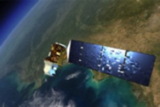
Remote sensing technology has another side that we would like to share with you, too. Watching the Earth’s landscapes, oceans and atmosphere from space is truly fascinating and lots of fun. It’s a great way to revel in the ever-changing beauty of our home planet.
An official website of the United States government
The .gov means it’s official. Federal government websites often end in .gov or .mil. Before sharing sensitive information, make sure you’re on a federal government site.
The site is secure. The https:// ensures that you are connecting to the official website and that any information you provide is encrypted and transmitted securely.
- Publications
- Account settings
Preview improvements coming to the PMC website in October 2024. Learn More or Try it out now .
- Advanced Search
- Journal List
- Front Psychol
The possibility of a science of magic
Ronald a. rensink.
1 Departments of Psychology and Computer Science, University of British Columbia, Vancouver, BC, Canada
Gustav Kuhn
2 Department of Psychology, Goldsmiths University of London, London, UK
The past few years have seen a resurgence of interest in the scientific study of magic. Despite being only a few years old, this “new wave” has already resulted in a host of interesting studies, often using methods that are both powerful and original. These developments have largely borne out our earlier hopes (Kuhn et al., 2008 ) that new opportunities were available for scientific studies based on the use of magic. And it would seem that much more can still be done along these lines.
But in addition to this, we also suggested that it might be time to consider developing an outright science of magic —a distinct area of study concerned with the experience of wonder that results from encountering an apparently impossible event 1 . To this end, we proposed a framework as to how this might be achieved (Rensink and Kuhn, 2015 ). A science can be viewed as a systematic method of investigation involving three sets of issues: (i) the entities considered relevant, (ii) the kinds of questions that can be asked about them, and (iii) the kinds of answers that are legitimate (Kuhn, 1970 ). In the case of magic, we suggested that this could be done at three different levels, each focusing on a distinct set of issues concerned with the nature of magic itself: (i) the nature of magical experience, (ii) how individual magic tricks create this experience, and (iii) organizing knowledge of the set of known tricks in a more comprehensive way (Rensink and Kuhn, 2015 ). Our framework also included a base level focused on how the methods of magic could be used as tools to investigate issues in existing fields of study.
Lamont ( 2010 ) and Lamont et al. ( 2010 ) raised a number of concerns about the possibility of such a science, which we have addressed (Rensink and Kuhn, 2015 ). More recently, Lamont ( 2015 ) raised a new objection, arguing that although base-level work (i.e., applications of magic methods) might be useful, there is too little structure in magic tricks for them to be studied in a systematic way at the other levels, ruling out a science of magic. We argue here, however, that although this concern raises some interesting challenges for this science, it does not negate the possibility that it could exist, and could contribute to the study of the mind.
Many different kinds of magic tricks clearly exist, and Lamont ( 2015 ) provides some nice examples of these. But a science of magic centers primarily around experiential effects, not tricks (Rensink and Kuhn, 2015 ). The first level of our framework above the base, for instance, focuses on aspects of experience that are largely unique to magic. One such set of issues concerns the possibility of different types—and levels—of wonder; an example is the work of Griffiths ( 2015 ) on the degree of interest evoked by various magical transformations. Issues also arise around people's impression of a magical “stuff” which acts as a causal agent, and the extent to which our perceptions and beliefs can deviate from objective reality. In all of this, the details of how the experiences are evoked are irrelevant. Said another way: at this level, the scientific study of magic is not concerned with the nature of magic tricks themselves, but with the magical aspects of experience created by these tricks . And these aspects appear quite amenable to study.
Magic tricks are of course important, and are the focus of the next level. Here, the emphasis is on how the effects evoked in each trick (including the sense of wonder) are created. A complete trick is a complex entity, with a method that typically has multiple components. For example, a magician may use patter to set up high-level expectations, and then misdirect perception to ensure that the observer does not notice the “main” manipulations. Explorations have already begun of several such components—e.g., the manipulations underlying the French Drop (Phillips et al., 2015 ), the timing used in simple coin vanishes (Beth and Ekroll, 2014 ), the social cues in the Vanishing Ball Illusion (Kuhn and Land, 2006 ), and the timing needed for a Riffle Force (Olson et al., 2015 ). Ideally, such studies will become more powerful, knitting together our knowledge of individual components, and allowing us to understand each magic trick in its entirety.
Lamont ( 2015 ) considers magic tricks as lacking sufficient structure for this to happen. There appear to be two reasons for this concern. The first is sheer variety —the fact that the number of items under consideration appears “endless.” However, such variety does not of itself prevent a scientific approach to a topic. In the case of language, for instance, the number of possible sentences has exactly this “endless” character. But they can still be analyzed using approaches such as phrase-structure grammar 2 (Chomsky, 1957 ) and psycho-linguistic experimentation (see O'Brien et al., 2015 ). In such approaches, appropriate selection of more basic elements (and their rules of combination) can let us understand aspects of a potentially infinite set of items. Methods in magic appear amenable to this, being composed of distinct components. Lamont ( 2015 ) provides a nice discussion of what some of these might be. Note that there is no problem if a component is used for different purposes in different tricks—if its analysis is based on functional considerations (as we have suggested), there will be no ambiguity in its role.
Another source of variety mentioned is a lack of clear boundaries. In this view, a trick carried out in a slightly different way is a different entity; given the nearly infinite number of small differences possible in methods (e.g., exact timing) and effects (e.g., exactly where a card appears), this results in a potentially infinite number of tricks. But this challenge has been faced—and met—in many other sciences. For example, each individual animal is different (and even changes over time). But this does not impede biology—this matter can be handled by the careful use of abstraction, with animals collected into groups of largely similar character. This approach could be readily applied to magic tricks, considering as equivalent those with little or no differences in how they are experienced—e.g., tricks in which the forcing techniques have slightly different timings, but which are equally effective.
A more interesting factor—one obliquely referred to in Lamont ( 2015 )—is what might be called contingency : different methods can often achieve the same effect, and no reasons may exist as to why one method should be chosen over another. However, this might be handled by grouping together those tricks with similar effects, and focusing on the aspects common to the group. Another approach would be to define a particular trick as using a particular method; the issue would then reduce to one of explaining its use in a given performance. The choice made could depend on a large number of factors, such as the tricks used in the rest of the performance, or how the magician is feeling at that moment. Such contingency reflects the artistic nature of a magic performance, but does not rule out the possibility of scientific study. Given that humans respond in roughly similar ways to a given stimulus, there are stable regularities in what results once a particular method and context have been selected . (If this did not occur, magic could never have become a popular form of entertainment.) And such regularities can be studied in a systematic way 3 .
Regarding possibilities at the highest level of our framework (systematization), Lamont ( 2015 ) claims that the lack of structure in tricks also prevents their classification in a principled way. Note, however, that systematic analysis is just one level of our framework: even if this were somehow entirely impossible, the other levels would remain. And contrary to Lamont's assertion, we have never claimed that a science of magic requires a complete inventory or classification. Although, a complete inventory or classification is a laudable goal, it is not a necessary one: such systems can often be valuable even when incomplete—e.g., predicting new entities and new relationships.
But even assuming that magic tricks have little structure, would this necessarily prevent their systematic classification? Various taxonomies for magic tricks clearly exist (see e.g., Lamont and Wiseman, 1999 ); as such, the issue is not whether a taxonomy is possible, but how principled its organization can be. Many such systems rely on “natural kinds”—well-defined categorical entities such as chemical elements or groups of related animals (e.g., species and genera). But although natural kinds can facilitate classification, they are not necessary for this. It is entirely possible, for example, to relate in a systematic way designs described by continuous parameters, even when these parameters interact with each other in complex ways (see Woodbury, 2010 ).
As to how a principled classification might be created for magic tricks: this is a complex issue, involving a great amount of empirical detail. This paper (and our two earlier ones) are in some ways preliminary exercises in the philosophy of magic 4 , concerned with issues of a more general nature. But as an example of how such a venture might proceed, we have elsewhere proposed a way to classify methods of misdirection (Kuhn et al., 2014 ). This is based on two principles: (i) rely on psychological mechanisms as much as possible, and (ii) have the highest levels of the taxonomy center around the mechanisms affected, and not the mechanisms that control these. (For details, see Kuhn et al., 2014 .) These principles greatly reduce the number of arbitrary decisions that typically enter into a classification of magic tricks (see Lamont, 2015 ); as such, we believe the result to be a fairly natural one. Other classifications are of course possible. For instance, some classifications may be better than ours for particular purposes, such as the teaching of prospective magicians. And even in established sciences such as biology, proposed taxonomies can vary—e.g., have more distinctions in taxonomic categories to capture more variability, or fewer distinctions to create a simpler organization (see e.g., Corliss, 1976 ). Finding the “sweet spot” in all of this will take time. But if history is any guide, it can be done. Our proposal—or one like it—therefore appears to have some potential to help researchers use magic to better understand perception, memory, and reasoning. And it could equally well enable knowledge of perception, memory, and reasoning to help better understand magic.
Are there factors we have not considered, factors that might influence the development of a science of magic? Undoubtedly. Will any of these ultimately prevent its development? Only time will tell. But there are grounds for optimism. For example, important advances have recently been made toward a science of film and a science of music, involving new issues that touch upon much more than just basic aspects of perception and cognition (e.g., Levitin, 2007 ; Ball, 2010 ; Shimamura, 2013 ; Smith, 2014 ). Given the nature of their subject matter, these areas are vulnerable to many of the same concerns as have been raised about a science of magic; nevertheless, the scientific development of these areas is proceeding. And if there are worries that no such attempts have ever succeeded, consider the case of steam engines. During the first century of their existence, an enormous number of these were created, with a great deal of variety and contingency in their design. And eventually, work began on a scientific framework to investigate the principles involved (see McClellan and Dorn, 2006 ). The resulting science—thermodynamics—has become one of the mainstays of modern physics, not only providing considerable insight into what such engines can and cannot do, but also helping us understand other processes of nature, from the metabolism of cells to the energy production of stars. Even if there is only a small chance that such a development could be possible for magic, it would appear to be a chance well worth taking.
Conflict of interest statement
The authors declare that the research was conducted in the absence of any commercial or financial relationships that could be construed as a potential conflict of interest.
Acknowledgments
We wish to thank the three reviewers for their feedback on a previous version of this paper. This work was supported by the Natural Sciences and Engineering Research Council of Canada, via a grant to RR.
2 As discussed in Rensink and Kuhn ( 2015 ), such an area could be implemented in a variety of ways, and have various possible labels—e.g., a “science of wonder” or a “psychology of magic.” Since those issues are irrelevant to the discussion here, we will simply use “science of magic” as a general term for all of these.
3 There is disagreement about the extent that phrase-structure grammars actually describe various languages (e.g., Postal, 1964 ). But this is primarily based on empirical considerations, not a priori ones about variety.
4 This situation is far from unique. For example, the meaning of a word depends on its context. But this has not prevented the scientific study of language.
5 Or more precisely, the philosophy of science as applied to the study of magic.
- Ball P. (2010). The Music Instinct: How Music Works and Why We Can't Do Without It . Oxford: University Press. [ Google Scholar ]
- Beth T., Ekroll V. (2014). The curious influence of timing on the magical experience evoked by conjuring tricks involving false transfer: decay of amodal object permanence? Psychol. Res. 79 , 513–522. 10.1007/s00426-014-0584-2 [ PubMed ] [ CrossRef ] [ Google Scholar ]
- Chomsky N. (1957). Syntactic Structures . Paris: Mouton. [ Google Scholar ]
- Corliss J. O. (1976). On lumpers and splitters of higher taxa in ciliate systematics . Trans. Am. Microsc. Soc. 95 , 430–442. 10.2307/3225136 [ CrossRef ] [ Google Scholar ]
- Griffiths T. L. (2015). Revealing ontological commitments by magic . Cognition 136 , 43–48. 10.1016/j.cognition.2014.10.019 [ PubMed ] [ CrossRef ] [ Google Scholar ]
- Kuhn G., Amlani A. A., Rensink R. A. (2008). Towards a science of magic . Trends Cogn. Sci. 12 , 349–354. 10.1016/j.tics.2008.05.008 [ PubMed ] [ CrossRef ] [ Google Scholar ]
- Kuhn G., Caffaratti H. A., Teszka R., Rensink R. A. (2014). A psychologically-based taxonomy of misdirection . Front. Psychol. 5 : 1392 . 10.3389/fpsyg.2014.01392 [ PMC free article ] [ PubMed ] [ CrossRef ] [ Google Scholar ]
- Kuhn G., Land M. F. (2006). There's more to magic than meets the eye . Curr. Biol. 16 , R950–R951. 10.1016/j.cub.2006.10.012 [ PubMed ] [ CrossRef ] [ Google Scholar ]
- Kuhn T. S. (1970). The Structure of Scientific Revolutions, 2nd Edn . Chicago, IL: University of Chicago Press. [ Google Scholar ]
- Lamont P. (2010). The misdirected quest . Psychology 23 , 978–980. Available online at: https://thepsychologist.bps.org.uk/volume-23/edition-12/misdirected-quest [ Google Scholar ]
- Lamont P. (2015). Problems with the mapping of magic tricks . Front. Psychol. 6 : 855 . 10.3389/fpsyg.2015.00855 [ PMC free article ] [ PubMed ] [ CrossRef ] [ Google Scholar ]
- Lamont P., Henderson J. M., Smith T. J. (2010). Where science and magic meet: the illusion of a “science of magic.” Rev. Gen. Psychol. 14 , 16–21. 10.1037/a0017157 [ CrossRef ] [ Google Scholar ]
- Lamont P., Wiseman R. (1999). Magic in Theory . Hartfield: Hermetic Press. [ Google Scholar ]
- Levitin D. J. (2007). This is Your Brain on Music: The Science of a Human Obsession . New York, NY: Plume. [ Google Scholar ]
- McClellan J. E., Dorn H. (2006). Science and Technology in World History, 2nd Edn. Baltimore, MD: Johns Hopkins University Press. [ Google Scholar ]
- O'Brien E. J., Cook A. E., Lorch R. F., Jr. (2015). Inferences During Reading . Cambridge, UK: Cambridge University Press. [ Google Scholar ]
- Olson J. A., Amlani A. A., Raz A., Rensink R. A. (2015). Influencing choice without awareness . Consc. Cogn. . [Epub ahead of print]. 10.1016/j.concog.2015.01.004 [ PubMed ] [ CrossRef ] [ Google Scholar ]
- Phillips F., Natter M. B., Egan E. J. L. (2015). Magically deceptive biological motion—the French Drop Sleight . Front. Psychol. 6 : 371 . 10.3389/fpsyg.2015.00371 [ PMC free article ] [ PubMed ] [ CrossRef ] [ Google Scholar ]
- Postal P. (1964). Limitations of phrase structure grammars , in The Structure of Language: Readings in the Philosophy , eds Fodor J. A., Katz J. J. (Englewood Cliffs, NJ: Prentice-Hall; ), 137–151. [ Google Scholar ]
- Rensink R. A., Kuhn G. (2015). A framework for using magic to study the mind . Front. Psychol. 5 : 1508 . 10.3389/fpsyg.2014.01508 [ PMC free article ] [ PubMed ] [ CrossRef ] [ Google Scholar ]
- Shimamura A. P. (ed.). (2013). Psychocinematics: Exploring Cognition at the Movies . New York, NY: Oxford University Press. [ Google Scholar ]
- Smith T. J. (2014). Audiovisual correspondences in Sergei Eisenstein's Alexander Nevsky: a case study in viewer attention , in Cognitive Media Theory (AFI Film Reader) , eds Taberham P., Nannicelli T. (New York, NY: Routledge; ), 85–105. [ Google Scholar ]
- Woodbury R. (2010). Elements of Parametric Design . New York, NY: Routledge. [ Google Scholar ]
Thank you for visiting nature.com. You are using a browser version with limited support for CSS. To obtain the best experience, we recommend you use a more up to date browser (or turn off compatibility mode in Internet Explorer). In the meantime, to ensure continued support, we are displaying the site without styles and JavaScript.
- View all journals
- Explore content
- About the journal
- Publish with us
- Sign up for alerts
- Science and Society
- Published: 30 July 2008
Attention and awareness in stage magic: turning tricks into research
- Stephen L. Macknik 1 ,
- James Randi 2 ,
- Apollo Robbins ,
- John Thompson &
- Susana Martinez-Conde 1
Nature Reviews Neuroscience volume 9 , pages 871–879 ( 2008 ) Cite this article
35k Accesses
136 Citations
604 Altmetric
Metrics details
Just as vision scientists study visual art and illusions to elucidate the workings of the visual system, so too can cognitive scientists study cognitive illusions to elucidate the underpinnings of cognition. Magic shows are a manifestation of accomplished magic performers' deep intuition for and understanding of human attention and awareness. By studying magicians and their techniques, neuroscientists can learn powerful methods to manipulate attention and awareness in the laboratory. Such methods could be exploited to directly study the behavioural and neural basis of consciousness itself, for instance through the use of brain imaging and other neural recording techniques.
This is a preview of subscription content, access via your institution
Relevant articles
Open Access articles citing this article.
The illusion of absence: how a common feature of magic shows can explain a class of road accidents
- Vebjørn Ekroll
- , Mats Svalebjørg
- … Alena Høye
Cognitive Research: Principles and Implications Open Access 24 March 2021
Access options
Subscribe to this journal
Receive 12 print issues and online access
176,64 € per year
only 14,72 € per issue
Buy this article
- Purchase on SpringerLink
- Instant access to full article PDF
Prices may be subject to local taxes which are calculated during checkout
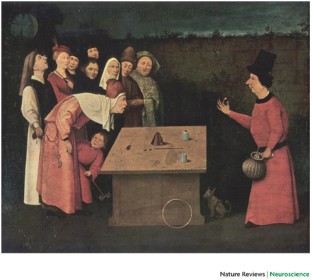
Christopher, M. & Christopher, M. The Illustrated History of Magic (Carroll & Graf, New York, 2006).
Google Scholar
Troncoso, X. G., Macknik, S. L. & Martinez-Conde, S. Novel visual illusions related to Vasarely's “nested squares” show that corner salience varies with corner angle. Perception 34 , 409–420 (2005).
Article PubMed Google Scholar
Troncoso, X. G. et al. BOLD activation varies parametrically with corner angle throughout human retinotopic cortex. Perception 36 , 808–820 (2007).
Troncoso, X., Macknik, S. L. & Martinez-Conde, S. Corner salience varies linearly with corner angle during flicker-augmented contrast: a general principle of corner perception based on Vasarely's artworks. Spat. Vis . (in the press).
Macknik, S. L. & Martinez-Conde, S. The spatial and temporal effects of lateral inhibitory networks and their relevance to the visibility of spatiotemporal edges. Neurocomputing 58–60 , 775–782 (2004).
Article Google Scholar
Macknik, S. L. Visual masking approaches to visual awareness. Prog. Brain Res. 155 , 177–215 (2006).
Lamont, P. & Wiseman, R. Magic in Theory (Hermetic, Seattle, 1999).
Tse, P. U. & Hsieh, P. J. Component and intrinsic motion integrate in 'dancing bar' illusion. Biol. Cybern. 96 , 1–8 (2007).
Article CAS PubMed Google Scholar
Pack, C. C. & Born, R. T. Temporal dynamics of a neural solution to the aperture problem in visual area MT of macaque brain. Nature 409 , 1040–1042 (2001).
Pack, C. C., Livingstone, M. S., Duffy, K. R. & Born, R. T. End-stopping and the aperture problem: two-dimensional motion signals in macaque V1. Neuron 39 , 671–680 (2003).
Pack, C. C., Gartland, A. J. & Born, R. T. Integration of contour and terminator signals in visual area MT of alert macaque. J. Neurosci. 24 , 3268–3280 (2004).
Article CAS PubMed PubMed Central Google Scholar
Roget, P. M. Explanation of an optical deception in the appearance of the spokes of a wheel seen through vertical apertures. Philos. Trans. R. Soc. Lond. B Biol. Sci. 115 , 131–140 (1825).
Munsterberg, H. The Photoplay. A Psychological study (Appelton and Co., New York and London, 1916).
Wertheimer, M. Drei Abhandlungen zur Gestalttheorie (Philosophische Akademie, Erlangen, 1925).
Macknik, S. L. & Martinez-Conde, S. Dichoptic visual masking reveals that early binocular neurons exhibit weak interocular suppression: implications for binocular vision and visual awareness. J. Cogn. Neurosci. 16 , 1049–1059 (2004).
Yarbus, A. L. Eye Movements and Vision (Plenum, New York, 1967).
Book Google Scholar
Macknik, S. L. & Livingstone, M. S. Neuronal correlates of visibility and invisibility in the primate visual system. Nature Neurosci. 1 , 144–149 (1998).
Macknik, S. L., Martinez-Conde, S. & Haglund, M. M. The role of spatiotemporal edges in visibility and visual masking. Proc. Natl Acad. Sci. USA 97 , 7556–7560 (2000).
Tse, P. U. Voluntary attention modulates the brightness of overlapping transparent surfaces. Vision Res. 45 , 1095–1098 (2005).
Carrasco, M. Covert attention increases contrast sensitivity: psychophysical, neurophysiological and neuroimaging studies. Prog. Brain Res. 154 , 33–70 (2006).
Pestilli, F. & Carrasco, M. Attention enhances contrast sensitivity at cued and impairs it at uncued locations. Vision Res. 45 , 1867–1875 (2005).
Carrasco, M., Penpeci-Talgar, C. & Eckstein, M. Spatial covert attention increases contrast sensitivity across the CSF: support for signal enhancement. Vision Res. 40 , 1203–1215 (2000).
Desimone, R. & Duncan, J. Neural mechanisms of selective visual attention. Annu. Rev. Neurosci. 18 , 193–222 (1995).
Robbins, A. The Magic of Consciousness symposium . 11th Annual Meeting of the Association for the Scientific Study of Consciousness (Las Vegas, 2007).
Rensink, R. A. Change detection. Annu. Rev. Psychol. 53 , 245–277 (2002).
O'Regan, J. K., Deubel, H., Clark, J. J. & Rensink, R. A. Picture changes during blinks: looking without seeing and seeing without looking. Vis. Cogn. 7 , 191–211 (2000).
Grimes, J. in Perception: Vancouver Studies in Cogntive Science (ed. Atkins, K.) 89–110 (Oxford Univ. Press, New York, 1996).
Rensink, R. A., O'Regan, J. K. & Clark, J. J. Image flicker is as good as saccades in making large scene changes invisible. Perception 24 (Suppl.), 26–27 (1995).
Rensink, R. A., O'Regan, J. K. & Clark, J. J. To see or not to see: the need for attention to perceive changes in scenes. Psychol. Sci. 8 , 368–373 (1997).
O'Regan, J. K., Rensink, R. A. & Clark, J. J. Change-blindness as a result of 'mudsplashes'. Nature 398 , 34 (1999).
Rensink, R. A., O'Regan, J. K. & Clark, J. J. On the failure to detect changes in scenes across brief interruptions. Vis. Cogn. 7 , 127–149 (2000).
Simons, D. J., Franconeri, S. L. & Reimer, R. L. Change blindness in the absence of a visual disruption. Perception 29 , 1143–1154 (2000).
Simons, D. J. & Chabris, C. F. Gorillas in our midst: sustained inattentional blindness for dynamic events. Perception 28 , 1059–1074 (1999).
Memmert, D. The effects of eye movements, age, and expertise on inattentional blindness. Conscious Cogn. 15 , 620–627 (2006).
Kuhn, G. & Tatler, B. W. Magic and fixation: now you don't see it, now you do. Perception 34 , 1155–1161 (2005).
Kuhn, G., Tatler, B. W., Findlay, J. M. & Cole, G. G. Misdirection in magic: implications for the relationship between eye gaze and attention. Vis. Cogn. 16 , 391–405 (2008).
Martinez-Conde, S. & Macknik, S. L. Windows on the mind. Sci. Am. 297 , 56–63 (2007).
Engbert, R. & Kliegl, R. Microsaccades uncover the orientation of covert attention. Vision Res. 43 , 1035–1045 (2003).
Hafed, Z. M. & Clark, J. J. Microsaccades as an overt measure of covert attention shifts. Vision Res. 42 , 2533–2545 (2002).
Kuhn, G. & Land, M. F. There's more to magic than meets the eye. Curr. Biol. 16 , R950–R951 (2006).
Milner, A. D. & Goodale, M. A. Two visual systems re-viewed. Neuropsychologia 46 , 774–785 (2008).
James, T. W., Culham, J., Humphrey, G. K., Milner, A. D. & Goodale, M. A. Ventral occipital lesions impair object recognition but not object-directed grasping: an fMRI study. Brain 126 , 2463–2475 (2003).
Milner, A. D. & Goodale, M. A. Visual pathways to perception and action. Prog. Brain Res. 95 , 317–337 (1993).
Goodale, M. A. & Milner, A. D. Separate visual pathways for perception and action. Trends Neurosci. 15 , 20–25 (1992).
Haffenden, A. M., Schiff, K. C. & Goodale, M. A. The dissociation between perception and action in the Ebbinghaus illusion: nonillusory effects of pictorial cues on grasp. Curr. Biol. 11 , 177–181 (2001).
Goodale, M. A. & Haffenden, A. Frames of reference for perception and action in the human visual system. Neurosci. Biobehav. Rev. 22 , 161–172 (1998).
Aglioti, S., DeSouza, J. F. & Goodale, M. A. Size-contrast illusions deceive the eye but not the hand. Curr. Biol. 5 , 679–685 (1995).
Milner, A. D. & Goodale, M. The Visual Brain in Action (Oxford Univ. Press, Oxford, 1995).
Bridgeman, B., Lewis, S., Heit, G. & Nagle, M. Relation between cognitive and motor-oriented systems of visual position perception. J. Exp. Psychol. Hum. Percept. Perform. 5 , 692–700 (1979).
Poppel, E., Held, R. & Frost, D. Residual visual function after brain wounds involving the central visual pathways in man. Nature 243 , 295–296 (1973).
Weiskrantz, L., Warrington, E. K., Sanders, M. D. & Marshall, J. Visual capacity in the hemianopic field following a restricted occipital ablation. Brain 97 , 709–728 (1974).
Freyd, J. J. & Finke, R. A. Representational momentum. J. Exp. Psychol. Learn. Mem. Cogn. 10 , 126–132 (1984).
Assad, J. A. & Maunsell, J. H. R. Neuronal correlates of inferred motion in primate posterior parietal cortex. Nature 373 , 518–521 (1995).
Krekelberg, B., Dannenberg, S., Hoffmann, K. P., Bremmer, F. & Ross, J. Neural correlates of implied motion. Nature 424 , 674–677 (2003).
Krekelberg, B., Vatakis, A. & Kourtzi, Z. Implied motion from form in the human visual cortex. J. Neurophysiol. 94 , 4373–4386 (2005).
Sharpe, S. Conjurers Psychological Secrets (Hades, Alberta, 1988).
Bex, P. J., Mareschal, I. & Dakin, S. C. Contrast gain control in natural scenes. J. Vis. 7 , 12.1–12 (2007).
Maattanen, L. M. & Koenderink, J. J. Contrast adaptation and contrast gain control. Exp. Brain Res. 87 , 205–212 (1991).
Li, L., Miller, E. K. & Desimone, R. The representation of stimulus familiarity in anterior inferior temporal cortex. J. Neurophysiol. 69 , 1918–1929 (1993).
Brown, M. W. & Bashir, Z. I. Evidence concerning how neurons of the perirhinal cortex may effect familiarity discrimination. Philos. Trans. R. Soc. Lond. B Biol. Sci. 357 , 1083–1095 (2002).
Lanyon, L. J. & Denham, S. L. A biased competition computational model of spatial and object-based attention mediating active visual search. Neurocomputing 58–60 , 655–662 (2004).
Desimone, R. Neural mechanisms for visual memory and their role in attention. Proc. Natl Acad. Sci. USA 93 , 13494–13499 (1996).
Miller, E. K. The prefrontal cortex and cognitive control. Nature Rev. Neurosci. 1 , 59–65 (2000).
Article CAS Google Scholar
Macknik, S. L. & Martinez-Conde, S. The role of feedback in visual masking and visual processing. Adv. Cognit. Psychol. 3 , 125–152 (2007).
Chen, Y. et al. Task difficulty modulates the activity of specific neuronal populations in primary visual cortex. Nature Neurosci. 6 Jul 2008 (doi:10.1038/nn.2147).
Joseph, E. How to Pick Pockets for Fun and Profit (Piccadilly Books,, Colorado Springs, 1992).
Ascanio, A. The Psychology of Palming (Ascanio, Madrid, 1982).
Thompson, J. The Magic of Consciousness symposium . 11th Annual Meeting of the Association for the Scientific Study of Consciousness (Las Vegas, 2007).
Pickrell, J. E., Bernstein, D. M. & Loftus, E. F. in Cognitive Illusions (ed. Pohl, R. F.) 345–361 (Psychology Press, New York, 2004).
Randi, J. The Magic of Consciousness symposium . 11th Annual Meeting of the Association for the Scientific Study of Consciousness (Las Vegas, 2007).
Wiseman, R. & Lamont, P. Unravelling the Indian rope-trick. Nature 383 , 212–213 (1996).
Lamont, P. The Rise of the Indian Rope Trick (Abacus, 2005).
Dennett, D. Explaining the “magic” of consciousness. J. Cult. Evol. Psychol. 1 , 7–19 (2003).
Teller. The Magic of Consciousness symposium . 11th Annual Meeting of the Association for the Scientific Study of Consciousness (Las Vegas, 2007).
Martinez-Conde, S. & Macknik, S. L. Mind tricks. Nature 448 , 414 (2007).
Fiedler, K. in Cognitive Illusions (ed. Pohl, R. F.) 97–114 (Psychology Press, New York, 2004).
Parris, B. A., Kuhn, G. & Hodgson, T. L. Imaging the impossible: a neuroimaging study of cause and effect violations in magic tricks . Abstr. 262.21, 35th annual meeting of the Society for Neuroscience (Atlanta, 2006).
Krueger, F. et al. Neural correlates of trust. Proc. Natl Acad. Sci. USA 104 , 20084–20089 (2007).
Andreasen, N. C. et al. Positive and negative symptoms of schizophrenia: past, present, and future. Acta Psychiatr. Scand. Suppl. 384 , 51–59 (1994).
Fiorillo, C. D., Tobler, P. N. & Schultz, W. Discrete coding of reward probability and uncertainty by dopamine neurons. Science 299 , 1898–1902 (2003).
Moll, J. et al. Human fronto-mesolimbic networks guide decisions about charitable donation. Proc. Natl Acad. Sci. USA 103 , 15623–15628 (2006).
Bartels, A. & Zeki, S. The neural correlates of maternal and romantic love. Neuroimage 21 , 1155–1166 (2004).
Aron, A. et al. Reward, motivation, and emotion systems associated with early-stage intense romantic love. J. Neurophysiol. 94 , 327–337 (2005).
Kolb, B. & Whishaw, I. Q. Fundamentals of Human Neuropsychology (Worth, 2008).
Kuhn, G. 11th Annual Meeting of the Association for the Scientific Study of Consciousness (Las Vegas, 2007).
Tamariz, J. The Magic Way (Frakson Books, Madrid, 1988).
King, M. 11th Annual Meeting of the Association for the Scientific Study of Consciousness (Las Vegas, 2007).
Tatler, B. W. & Kuhn, G. in Eye Movements: A Window on Mind and Brain (ed. van Gompel, R. P. G., Fischer, M. H., Murray, W. S. & Hill, R. L.) 697–714 (Elsevier, Oxford, 2007).
Johansson, P., Hall, L., Sikstrom, S., Tarning, B. & Lind, A. How something can be said about telling more than we can know: on choice blindness and introspection. Conscious. Cogn. 15 , 673–692 (2006).
Johansson, P., Hall, L., Sikstrom, S. & Olsson, A. Failure to detect mismatches between intention and outcome in a simple decision task. Science 310 , 116–119 (2005).
Macknik, S. L., Fisher, B. D. & Bridgeman, B. Flicker distorts visual space constancy. Vision Res. 31 , 2057–2064 (1991).
Bridgeman, B. B. & Macknik, S. L. Saccadic suppression relies on luminance information. Psychol. Res. 58 , 163–168 (1995).
Holt, E. B. Eye movements and central anaesthesia. Psychol. Rev. 4 , 3–45 (1903).
Johnson, G. Sleights of Mind. The New York Times D1, D4 (21 Aug 2007).
Download references
Acknowledgements
We are grateful to the Mind Science Foundation (MSF) and its Executive Director, J. Dial, for sponsoring the filming of the Magic of Consciousness symposium and for kindly producing the supplementary movies for this paper. We thank M. Stewart for technical assistance and J. Otero-Millan for programming assistance. We are grateful to the Barrow Neurological Foundation for funding this study (S.L.M. and S.M.C.), in addition to grants from the Science Foundation Arizona to S.L.M. (CAA 0091-07), the National Science Foundation to S.L.M. (0726113) and S.M.C. (0643306), the Arizona Biomedical Research Commission to S.L.M. (06-083) and S.M.C. (07-102), and the Dana Foundation to S.M.C.
Author information
Authors and affiliations.
Stephen L. Macknik and Susana Martinez-Conde are at the Barrow Neurological Institute, 350 West Thomas Road, Phoenix, Arizona 85013, USA.,
Stephen L. Macknik & Susana Martinez-Conde
James Randi is at the James Randi Educational Foundation, 201 South East 12th Street, Fort Lauderdale, Florida 33316, USA.,
James Randi
You can also search for this author in PubMed Google Scholar
Corresponding author
Correspondence to Susana Martinez-Conde .
Ethics declarations
Competing interests.
The authors declare no competing financial interests.
Supplementary information
Supplementary information s1 (movie).
Johnny Thompson (aka The Great Tomsoni). “Closing all the doors.” The Magic of Consciousness Symposium. Courtesy of the Mind Science Foundation and the Association for the Scientific Study of Consciousness. (MOV 9847 kb)
Supplementary information S2 (movie)
James Randi (aka The Amaz!ng Randi). “Accepting assumptions not assertions.” The Magic of Consciousness Symposium. Courtesy of the Mind Science Foundation and the Association for the Scientific Study of Consciousness. (MOV 14787 kb)
Supplementary information S3 (movie)
Apollo Robbins. “Misdirection is the story that you make them remember.” The Magic of Consciousness Symposium. Courtesy of the Mind Science Foundation and the Association for the Scientific Study of Consciousness. (MOV 12145 kb)
Supplementary information S4 (movie)
Teller. “Disguising an action as another.” The Magic of Consciousness Symposium. Courtesy of the Mind Science Foundation and the Association for the Scientific Study of Consciousness. (MOV 10442 kb)
Supplementary information S5 (movie)
Mac King. “It's a bad idea to do the same trick twice.” The Magic of Consciousness Symposium. Courtesy of the Mind Science Foundation and the Association for the Scientific Study of Consciousness. (MOV 10278 kb)
Supplementary information S6 (movie)
James Randi (aka The Amaz!ng Randi). “The Amaz!ing Randi pulls a “fast one” on philosopher Dan Dennett.” The Magic of Consciousness Symposium. Courtesy of the Mind Science Foundation and the Association for the Scientific Study of Consciousness. (MOV 8404 kb)
Related links
Further information.
Susana Martinez-Conde's homepage
Stephen Macknik's homepage
Mack King's homepage
James Randi's homepage
Apollo Robbins' hompage
Teller's homepage
John Thompson's homepage
Association for the Scientific Study of Consciousness
Mind Science Foundation
Colour-Changing Card Trick
A sensory neuron's response to the turning off of a stimulus.
A neurological condition in which a patient with damage in the primary visual cortex is unaware of visual events that occur in the corresponding portion of the visual field, despite exhibiting good performance on visual tasks conducted in that region.
The failure to notice changes in an object or scene over a period of time.
The failure to notice a salient object or visible feature in a scene owing to misdirected attention or attention that is not engaged at a level sufficient to achieve awareness of the object.
The technique used by magicians to hide items in the palms of their hands (which are turned away from the observer), so as to make it look like the hands are empty.
Small, involuntary saccades that are produced when subjects attempt to fixate their gaze on a visual target.
A fast, jerky eye movement that transports the fovea from one visual target to another in a straight-line trajectory.
A type of eye movement in which the retinal fovea smoothly tracks the position of a moving object.
Rights and permissions
Reprints and permissions
About this article
Cite this article.
Macknik, S., King, M., Randi, J. et al. Attention and awareness in stage magic: turning tricks into research. Nat Rev Neurosci 9 , 871–879 (2008). https://doi.org/10.1038/nrn2473
Download citation
Published : 30 July 2008
Issue Date : November 2008
DOI : https://doi.org/10.1038/nrn2473
Share this article
Anyone you share the following link with will be able to read this content:
Sorry, a shareable link is not currently available for this article.
Provided by the Springer Nature SharedIt content-sharing initiative
This article is cited by
- Mats Svalebjørg
Cognitive Research: Principles and Implications (2021)
Impact of technical information in magic-based inspiration tools on novice designers
- Lalita Haritaipan
- Celine Mougenot
International Journal of Technology and Design Education (2019)
Human Visual Attention Model Based on Analysis of Magic for Smooth Human–Robot Interaction
- Yusuke Tamura
- Takafumi Akashi
- Hisashi Osumi
International Journal of Social Robotics (2016)
The curious influence of timing on the magical experience evoked by conjuring tricks involving false transfer: decay of amodal object permanence?
Psychological Research (2015)
Personal Social Networks and the Cultivation of Expertise in Magic: An Interview Study
- Olli Rissanen
- Tuire Palonen
- Kai Hakkarainen
Vocations and Learning (2013)
Quick links
- Explore articles by subject
- Guide to authors
- Editorial policies
Sign up for the Nature Briefing newsletter — what matters in science, free to your inbox daily.
Sorry, there was a problem.

Download the free Kindle app and start reading Kindle books instantly on your smartphone, tablet, or computer - no Kindle device required .
Read instantly on your browser with Kindle for Web.
Using your mobile phone camera - scan the code below and download the Kindle app.

Image Unavailable
- To view this video download Flash Player
Follow the author

Slaves of Spiegel: A Magic Moscow Mystery/Cassette Audio Cassette – Audiobook, April 1, 1994
- Language English
- Publisher Dove Entertainment Inc
- Publication date April 1, 1994
- Dimensions 4.25 x 0.75 x 7.25 inches
- ISBN-10 1558009949
- ISBN-13 978-1558009943
- See all details
Editorial Reviews
From audiofile, product details.
- Publisher : Dove Entertainment Inc (April 1, 1994)
- Language : English
- ISBN-10 : 1558009949
- ISBN-13 : 978-1558009943
- Item Weight : 3.21 ounces
- Dimensions : 4.25 x 0.75 x 7.25 inches
- Best Sellers Rank: #9,006,880 in Books ( See Top 100 in Books )
About the author
Daniel pinkwater.
Daniel Pinkwater lives with his wife, the illustrator and novelist Jill Pinkwater, and several dogs and cats in a very old farmhouse in New York's Hudson River Valley.
Customer reviews
- 5 star 4 star 3 star 2 star 1 star 5 star 68% 32% 0% 0% 0% 68%
- 5 star 4 star 3 star 2 star 1 star 4 star 68% 32% 0% 0% 0% 32%
- 5 star 4 star 3 star 2 star 1 star 3 star 68% 32% 0% 0% 0% 0%
- 5 star 4 star 3 star 2 star 1 star 2 star 68% 32% 0% 0% 0% 0%
- 5 star 4 star 3 star 2 star 1 star 1 star 68% 32% 0% 0% 0% 0%
Customer Reviews, including Product Star Ratings help customers to learn more about the product and decide whether it is the right product for them.
To calculate the overall star rating and percentage breakdown by star, we don’t use a simple average. Instead, our system considers things like how recent a review is and if the reviewer bought the item on Amazon. It also analyzed reviews to verify trustworthiness.
- Sort reviews by Top reviews Most recent Top reviews
Top reviews from the United States
There was a problem filtering reviews right now. please try again later..
- About Amazon
- Investor Relations
- Amazon Devices
- Amazon Science
- Sell products on Amazon
- Sell on Amazon Business
- Sell apps on Amazon
- Become an Affiliate
- Advertise Your Products
- Self-Publish with Us
- Host an Amazon Hub
- › See More Make Money with Us
- Amazon Business Card
- Shop with Points
- Reload Your Balance
- Amazon Currency Converter
- Amazon and COVID-19
- Your Account
- Your Orders
- Shipping Rates & Policies
- Returns & Replacements
- Manage Your Content and Devices
- Conditions of Use
- Privacy Notice
- Consumer Health Data Privacy Disclosure
- Your Ads Privacy Choices
| Overview | Map | Directions | Satellite | Photo Map |
| Overview | Map | Directions |
| Satellite | Photo Map |
| Tap on the map to travel |
Notable Places in the Area
Vnukovo airport.

Settlement of Institute of Poliomyelitis

- Type: Town with 20,000 residents
- Description: district of Moscow, Russia
- Categories: district of Moscow and locality
- Location: Vnukovo District , Western Administrative Okrug , Moscow , Moscow Oblast , Central Russia , Russia , Eastern Europe , Europe
- View on OpenStreetMap
Vnukovo Satellite Map
Popular Destinations in Moscow
Curious places to discover.

IMAGES
VIDEO
COMMENTS
But maybe not. According to the RIKEN team's recent study, spacetime may partially be a product of a quantum property called "magic.". Yup. Spacetime might just come from magic. Physicists ...
Stuart Damon - Wikipedia ... Stuart Damon
MAGIC AND SPACE ROBERT DAVID SACK ABSTRACT. Magic can be thought of as a systematic but unusual approach to the ... forthcoming from research on the role of visu-alization in cognition, the perception of cau- ... Scholars allow magic a touch of 5Yi-Fu Tuan, "Space and Place: Humanistic Per-spective," in C. Board et al., eds., Progress in Geogra-
Quantum 'magic' could help explain the origin of spacetime
The Nova attack is very slow. #1. Zeustiak Jul 18 @ 12:47pm. Knockout (Earth) is great as long as they aren't casting stun immunity before that. That or the stun pouch items. Paralyze (Lightning) can work too if the Nova is coming at the very end of the battle right before they die. #2. Bruknows Jul 18 @ 1:30pm.
Barbie: A Touch of Magic
Space research - Wikipedia ... Space research
In the Land of Magic Windows, you can learn about the electromagnetic spectrum and see objects in space through different kinds of light.
214 votes, 19 comments. 61K subscribers in the TheMagnusArchives community. Subreddit for the weekly horror podcast The Magnus Archives produced by…
In February 2022, NASA's Parker Solar Probe detected a pocket of solar wind blasting from the sun's outer atmosphere, or corona.The probe, which is the fastest human-made object in history ...
The idea of a fire raging on the International Space Station (ISS), or on a future vessel voyaging through interplanetary space, is frightening. But in space, air doesn't move around in convection currents as it does on Earth because, with there being virtually no gravity, warmer, less dense air won't rise. Without convection, fires aren't fed ...
The 40th anniversary of the Bolshevik Revolution on 7 November provided the perfect opportunity for another successful Soviet launch, and Khrushchev demanded a "space spectacular" to stun the world. It came in the most unlikely of packages - a three-year-old dog named Laika. Laika had spent her life as a stray on the streets of Moscow ...
A Touch of Magic - Digital Download. The Palmist by Andrew Lam. -Performed by James Naughton. -A chance encounter on a bus between a fortune-teller and a teenage boy. The Monkey's Paw by W.W. Jacobs. -Performed by John Lithgow. -A wonderful ghost story about a trinket with terrible powers. Buy this story on mp3!
The mystery of "magic islands" on Saturn's moon Titan may have been solved, according to a study. This artist's concept shows a mirror-smooth lake on the surface of the smoggy moon Titan.
Magic is an art form that has fascinated humans for centuries. Recently, the techniques used by magicians to make their audience experience the impossible have attracted the attention of psychologists, who, in just a couple of decades, have produced a large amount of research regarding how these effects operate, focusing on the blind spots in perception and roadblocks in cognition that magic ...
A touch of tech magic. A touch of tech magic. ... 3D simulations where students can practice charms in a safe space, without the risk of explosions. ... in teams and use data analysis tools to ...
Space Time Magic Series Inner Alchemy Series Magical Journals of Taylor Ellwood Walking with Spirits Taylor's Occult Poetics Joanna Brook My story. My Story Manifesto Media Blog Start Here Magical Experiments. Services ...
An important goal of the MAGIC program is to transfer the information developed from remote sensing technology to a wider audience of public and private decision makers, government workers, students and private citizens. ... Send site comments to the Center for Space Research. Last Updated: May 4, 2022. 3925 West Braker Lane, Suite 200 Austin ...
The possibility of a science of magic. The past few years have seen a resurgence of interest in the scientific study of magic. Despite being only a few years old, this "new wave" has already resulted in a host of interesting studies, often using methods that are both powerful and original. These developments have largely borne out our ...
Here we discuss a few categories of visual illusions that have contributed to magic tricks, as well as their neural bases. Spoon bending. In this illusion the magician bends a spoon, apparently by ...
Space/Time Magic Foundations contains outstanding ideas and to-the-point, brilliantly useful insights, grounded in solid research. It is packed with helpful, new (I have not found elsewhere) information.
We are both Taureans and have bonded over our similar views on life, relationships, and most importantly; food. In one of our discussions, he asked me what my experiences with the weird and the…
Slaves of Spiegel: A Magic Moscow Mystery/Cassette [Pinkwater, Daniel Manus] on Amazon.com. *FREE* shipping on qualifying offers. Slaves of Spiegel: A Magic Moscow Mystery/Cassette
Vnukovo. Vnukovo District is an administrative district of Western Administrative Okrug, and one of the 125 raions of Moscow, Russia. Most of the district is occupied by Vnukovo International Airport, a small adjacent residential area, and a separate residential micro-district. Photo: Ssr, CC BY-SA 3.0. Ukraine is facing shortages in its brave ...